

DIMA GINZBURG
Product Designer
Advocate of 100% Atomic Design and component layouts that ensure flexibility and scalability
Mastery of Figma (components, libraries, plugins, variables), skilled in user-centric design
Experienced in prototypes to showcase product interactions and boost engagement
Background in media, ecommerce, game development. Over 7 years of experience in entrepreneurship
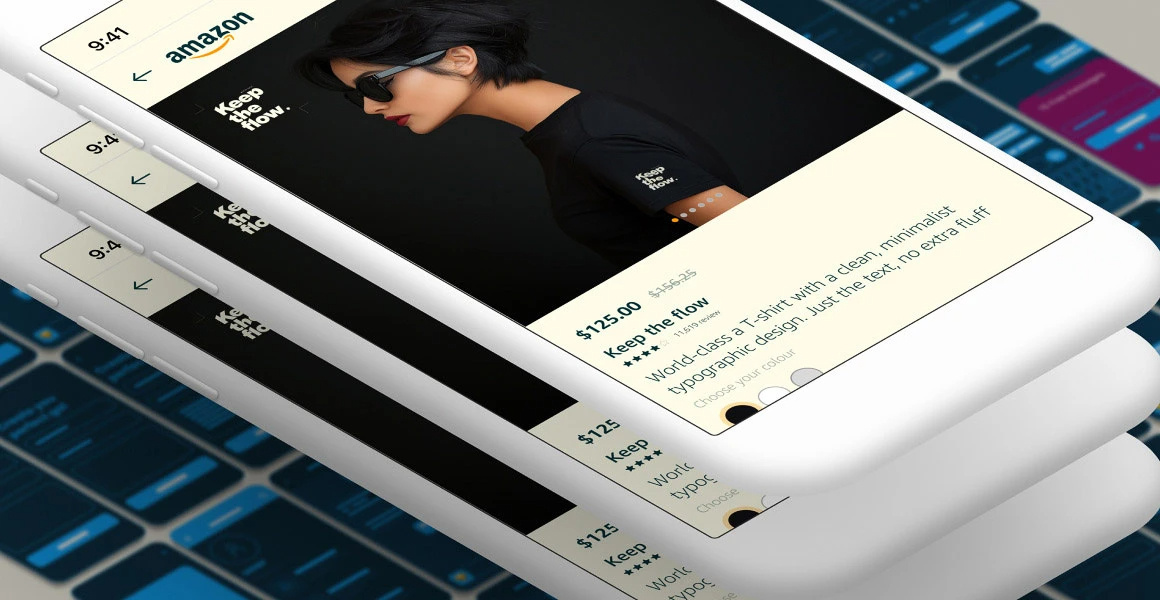
Skills:
Product Design
UX/UI design
Web Development
Usability Testing
Wireframing
Prototyping
Information Architecture
Design Systems
Interactive flow
tools:
Figma, Tilda
Adobe, Carrd
Sketch, Framer

client
Keep the flow
year
2024
role
UX/UI Designer, Graphic Designer, Copyrighter, Web Designer
overview
The project uses a fully component-driven layout, where 100% of the design is based on components with variations, properties, and parameters. This ensures scalability, fast updates, and consistent UI across the product. The clean, minimalist product card mirrors the simplicity of the t-shirt. Built with Atomic Design principles, the layout is structured for easy maintenance and evolution. To improve UX, I created an interactive prototype in Figma, using dynamic interactions to test user flows in realistic conditions. The project includes 54 components, 30 variables, and 33 styles.
challenge
The challenge was to create a product using typography and AI tools, turning a t-shirt into a fully digital product, including the design of its distribution channels.
Deliverables
End-to-End product development: delivered a cohesive product experience from packaging design to digital distribution interfaces, aligning all touchpoints under a unified visual and interactive framework. This approach reinforced brand identity and ensured a seamless user journey across physical and digital channels.
detail #01
100% atomic design. The entire layout is built using atomic design principles. This approach ensures the interface components are consistent and helps maintain and edit layouts efficiently as the project evolves.
detail #02
AI-Driven Characters. MidJourney created AI characters with diverse genders, races, and backgrounds, unified by a consistent lighting scheme.
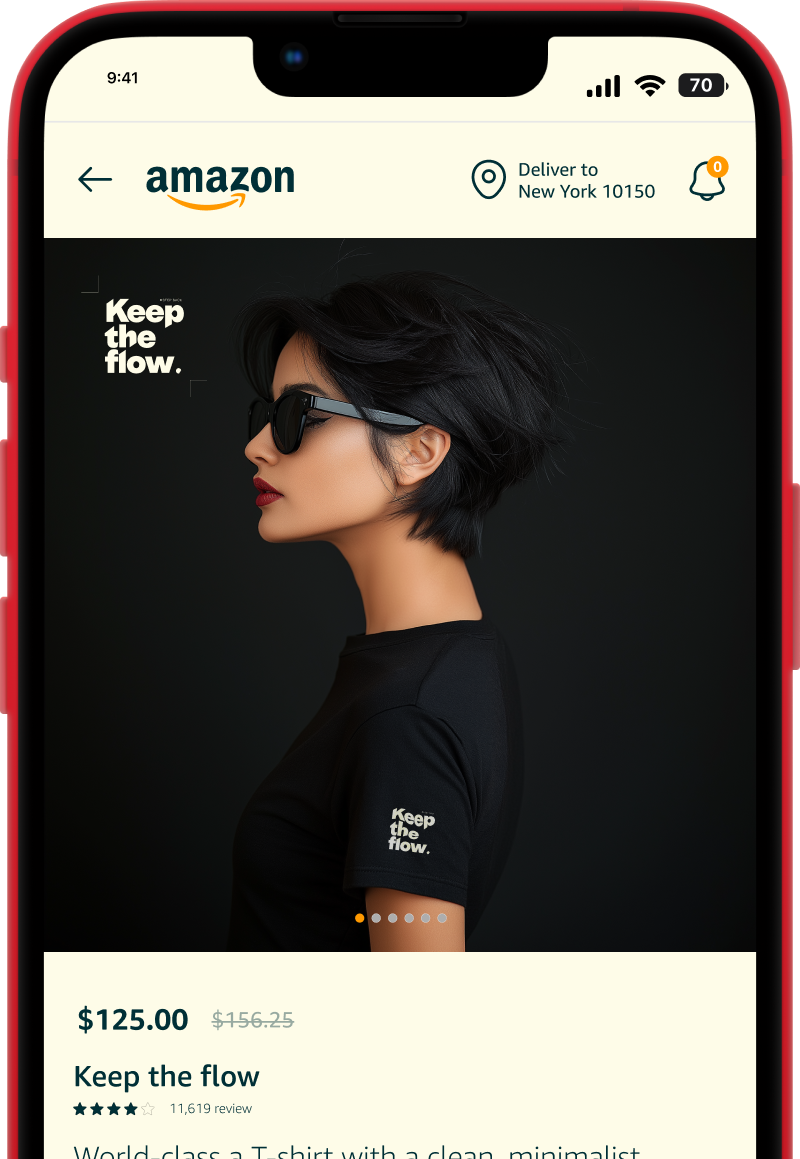
100% Atomic Design
AI-Driven Characters and Strong Typography
Interactive Prototype
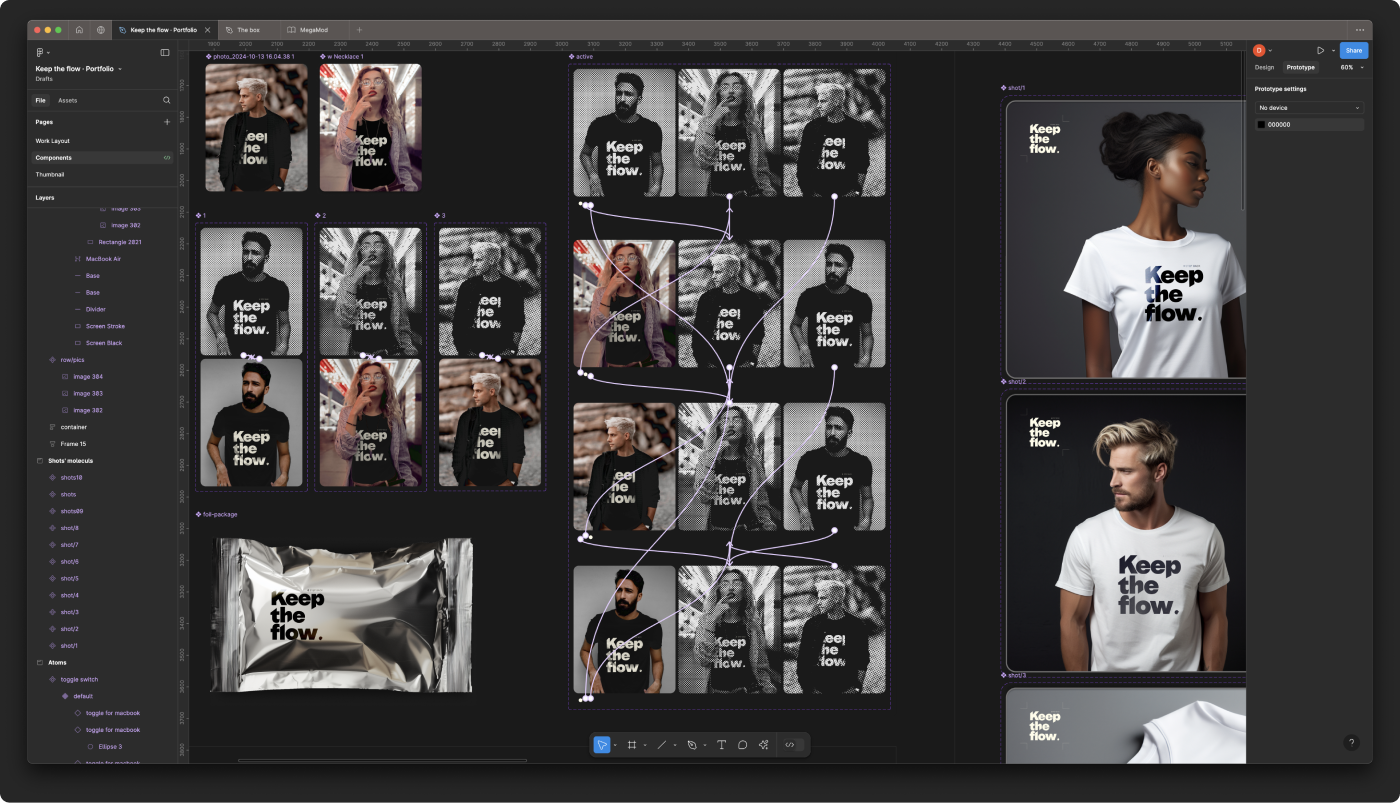
Fully component-driven layout
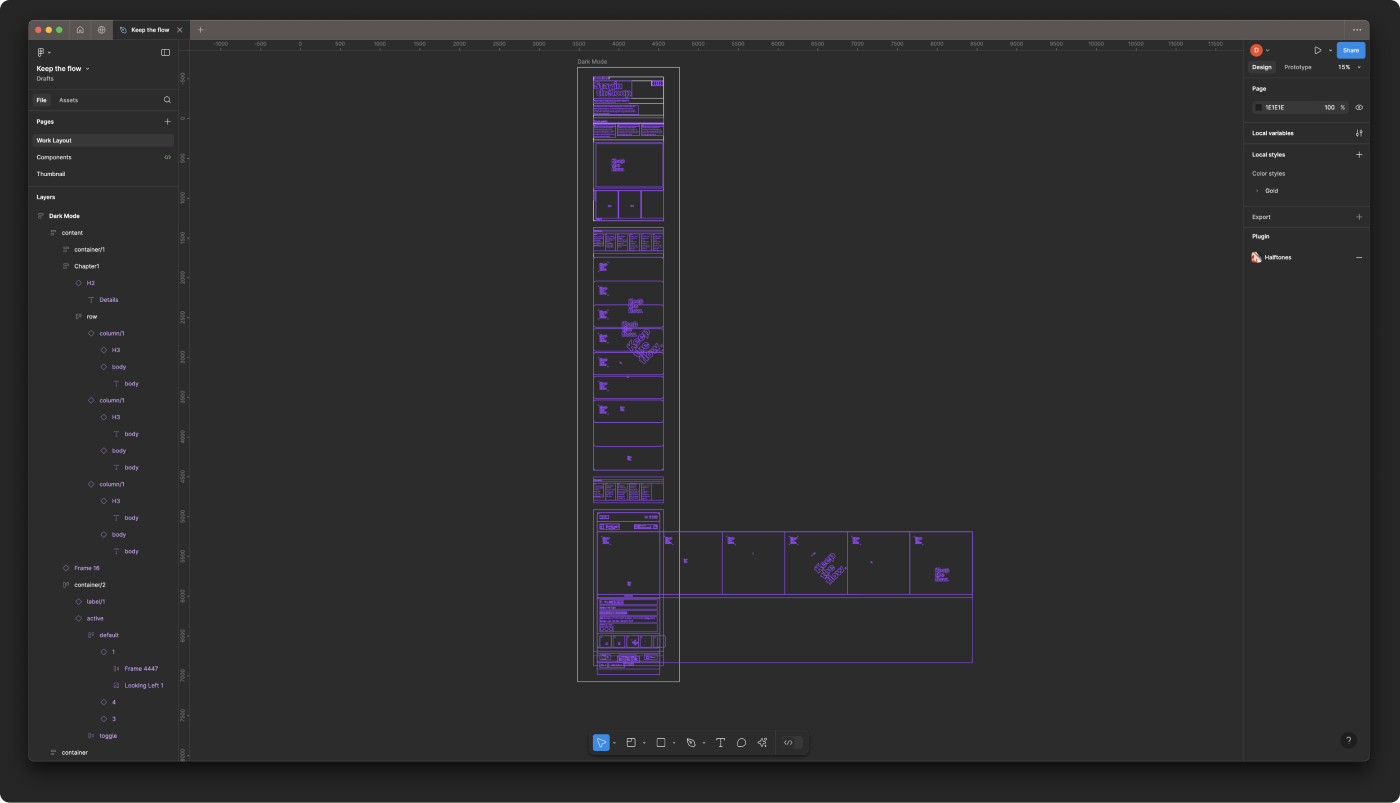
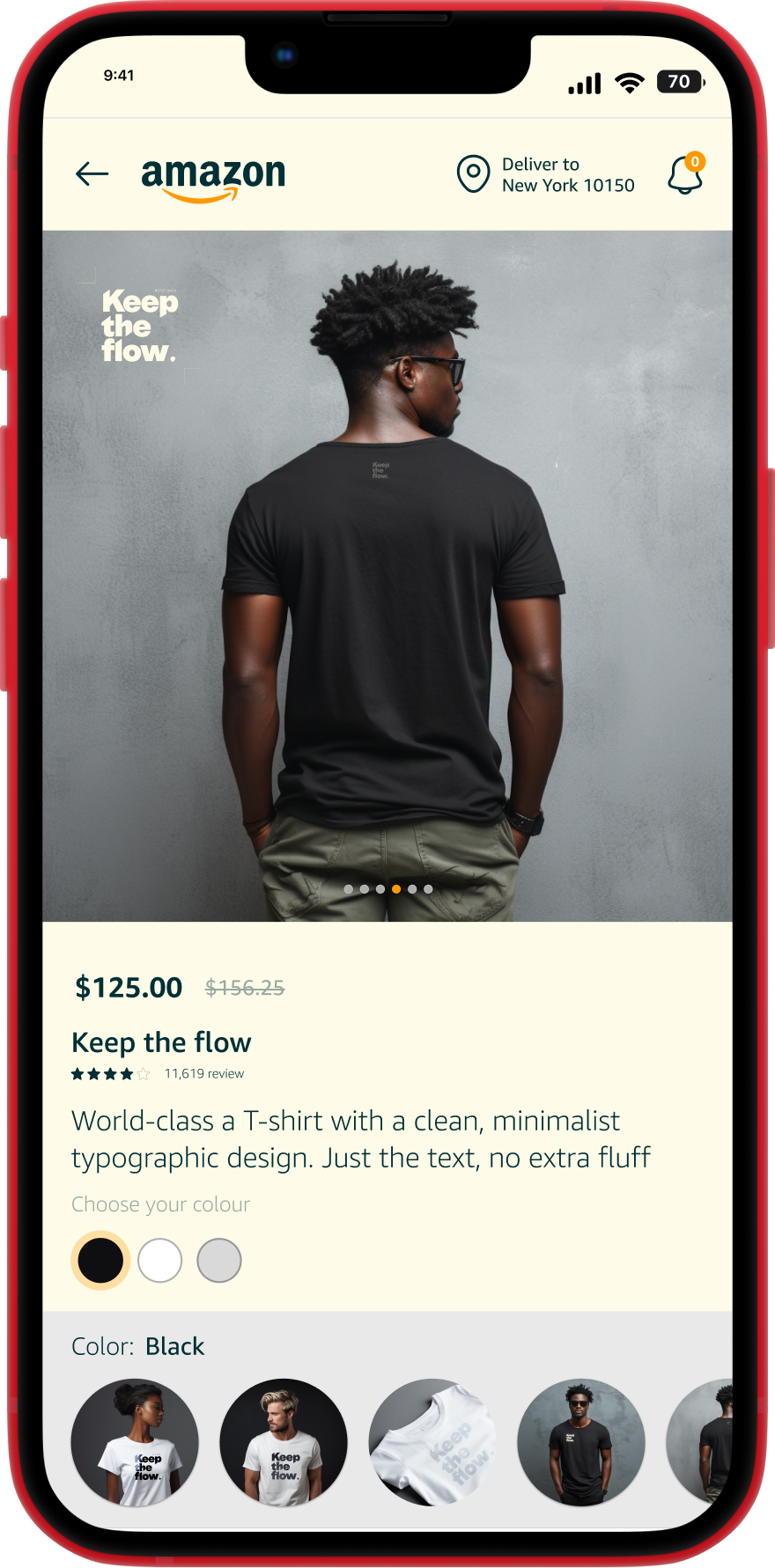

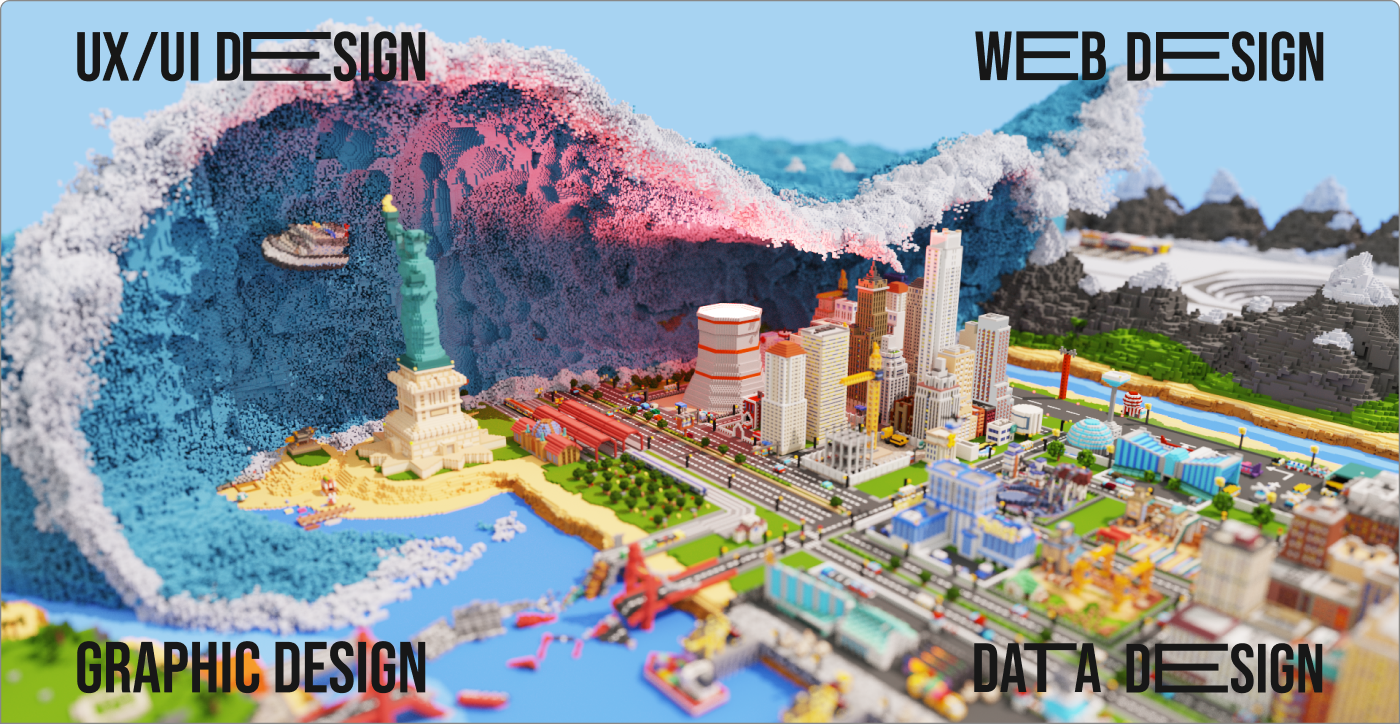
client
Megamod
year
2024
role
UX/UI Designer. Led the design process, from conducting interviews with potential investors to developing the website’s information and content architecture. I built responsive versions for desktop, tablet, and mobile.
challenge
The challenge was twofold: to deliver the website in just 1.5 months and structure it effectively to meet venture capitalists’ needs. While the site served as a supportive tool for raising $3 million, it was crucial in showcasing the product and presenting the necessary narrative to engage investors during the six-month fundraising period.
Deliverables
The website underwent three iterations to refine the narrative, each adapting to changes in the startup’s strategy. The funding round was successfully closed, and the site now operates seamlessly across all platforms with an optimized design. Additionally, we created extra pages and sections that are generating new collaborations, contributing to the startup’s growth of 1.7% per week.
detail #01
Interactive Animation. The project features complex interactive animations that effectively showcase a diverse product portfolio. Utilizing the bento design principle, we organized the portfolio into verticals at the first level. Users can click on a vertical to dive deeper into the second and even third levels, simplifying the perception of the overall structure.
detail #02
Dynamic Chart. I developed an interactive chart prototype that automatically updates daily. Built using JavaScript, this feature ensures that investors have access to real-time data on key company metrics, providing transparency and insight into performance trends.
detail #02
Targeted Satellites. For the investment website, I developed several satellite sites tailored to different audiences. The first focuses on partnerships in game distribution, while the second targets media outlets, featuring a brand book, corporate identity, and options for booking interviews or conference appearances. This strategy effectively expanded our publicity efforts, including a notable publication in TechCrunch.
Informational Architecture
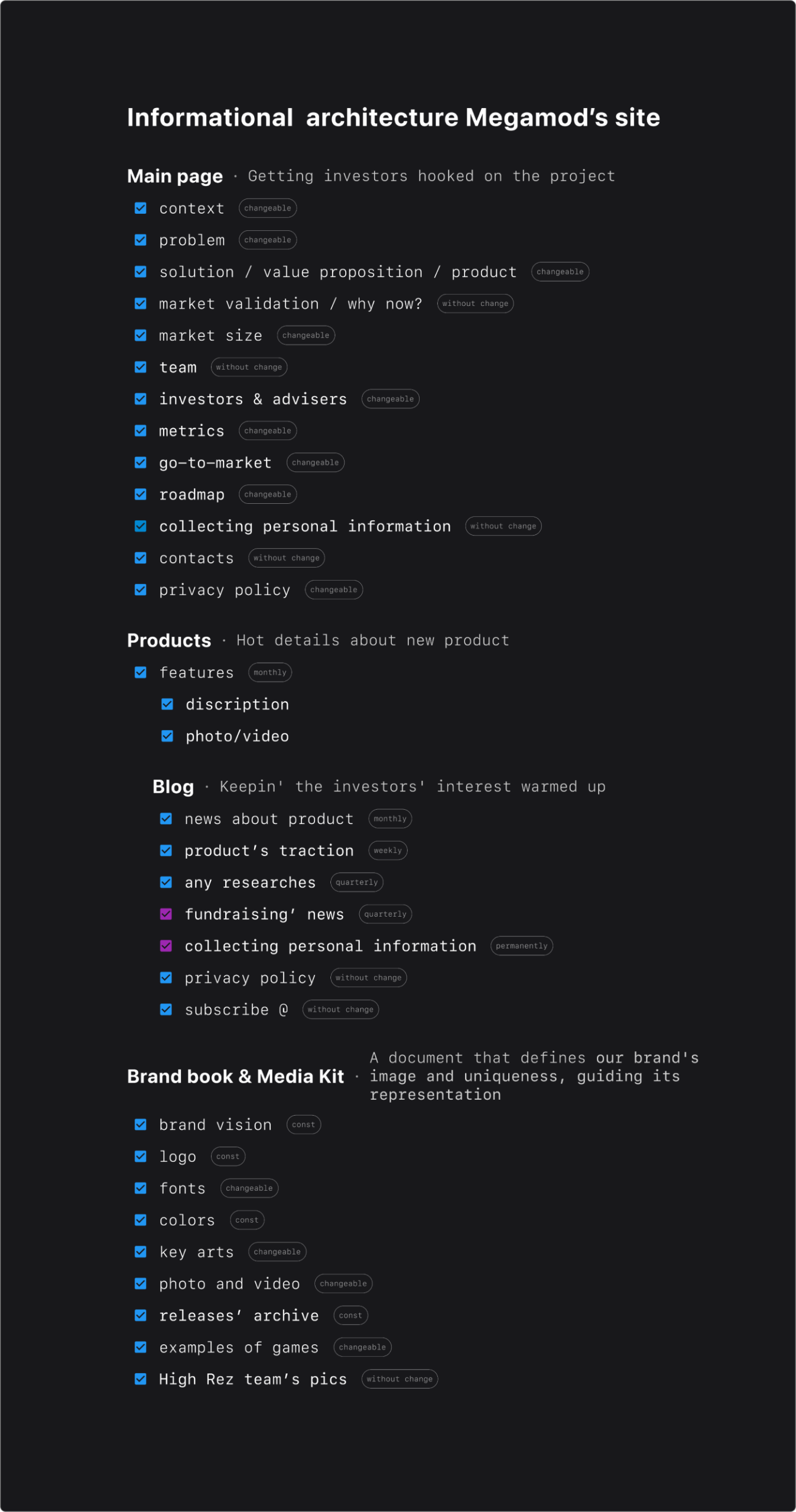
Interactive Animation
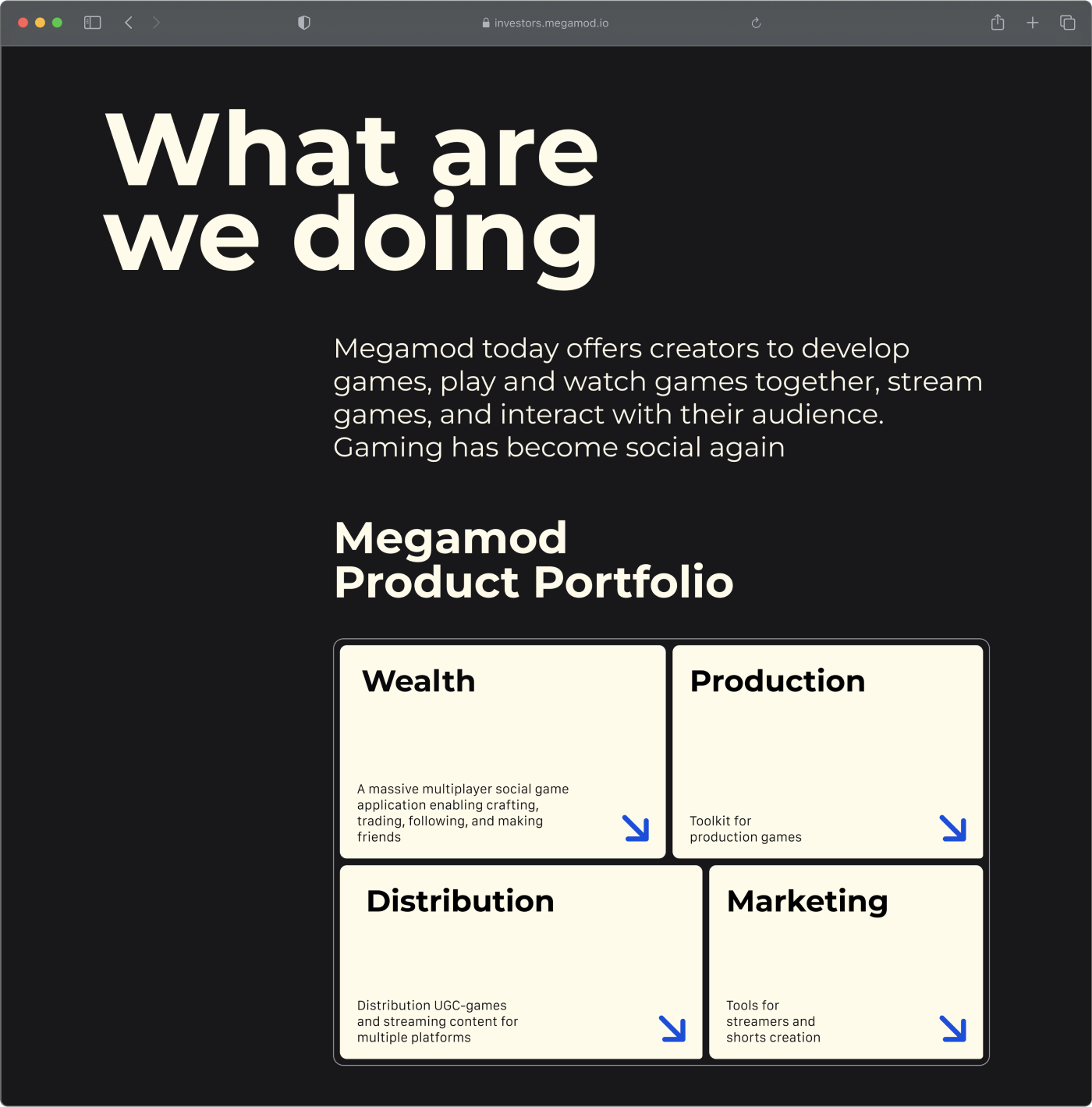
Dynamic Chart
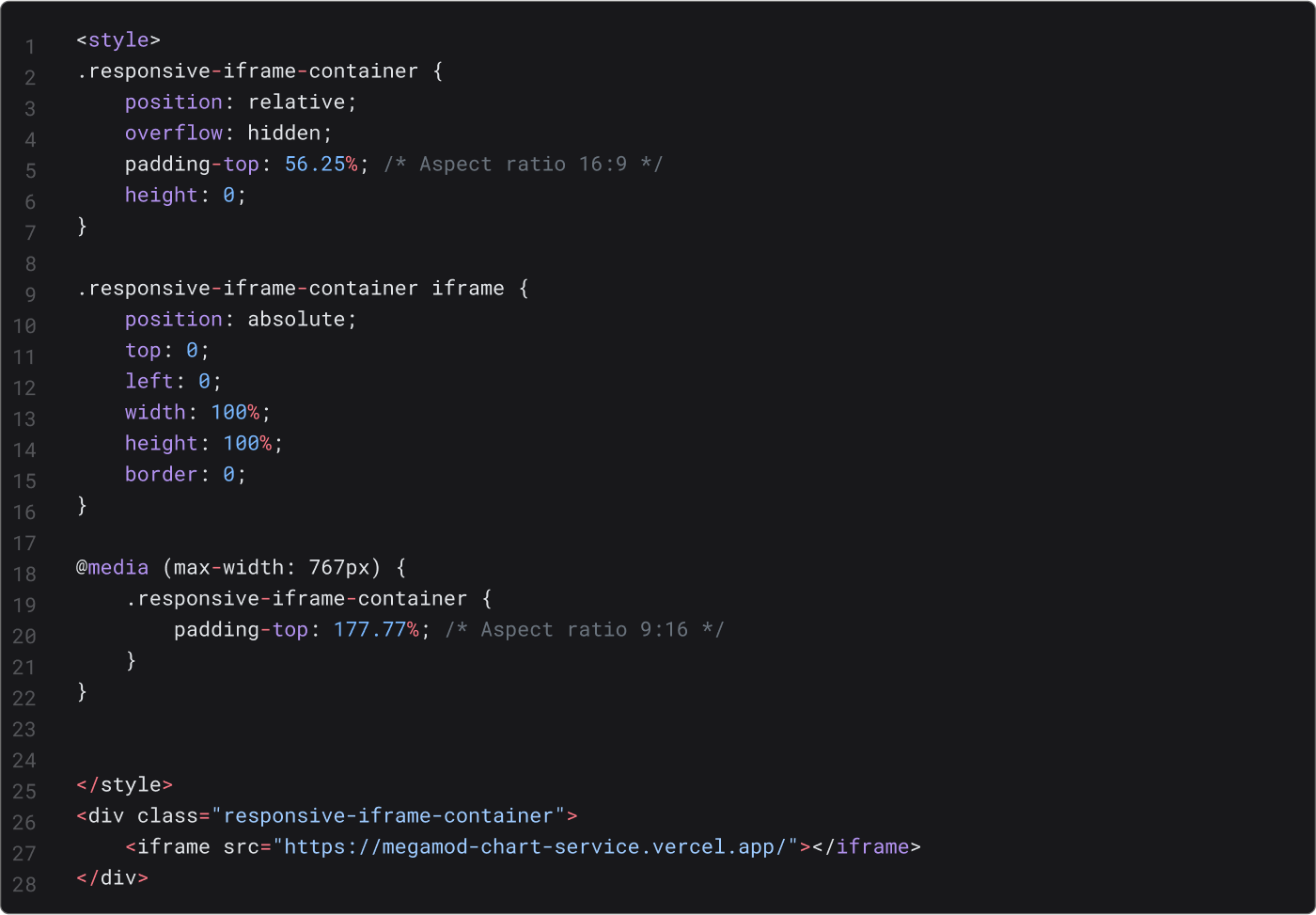
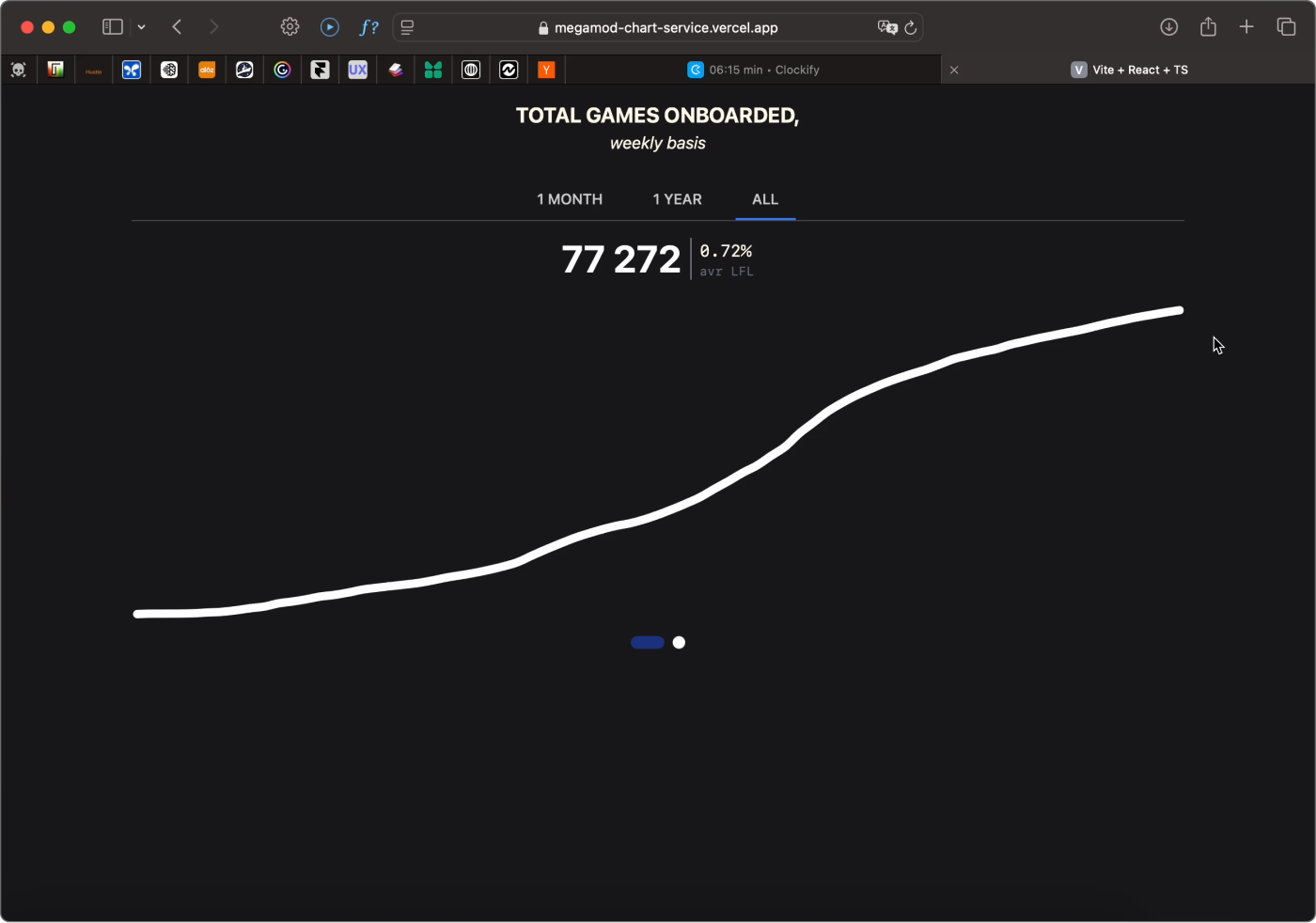
Interactive Prototyping
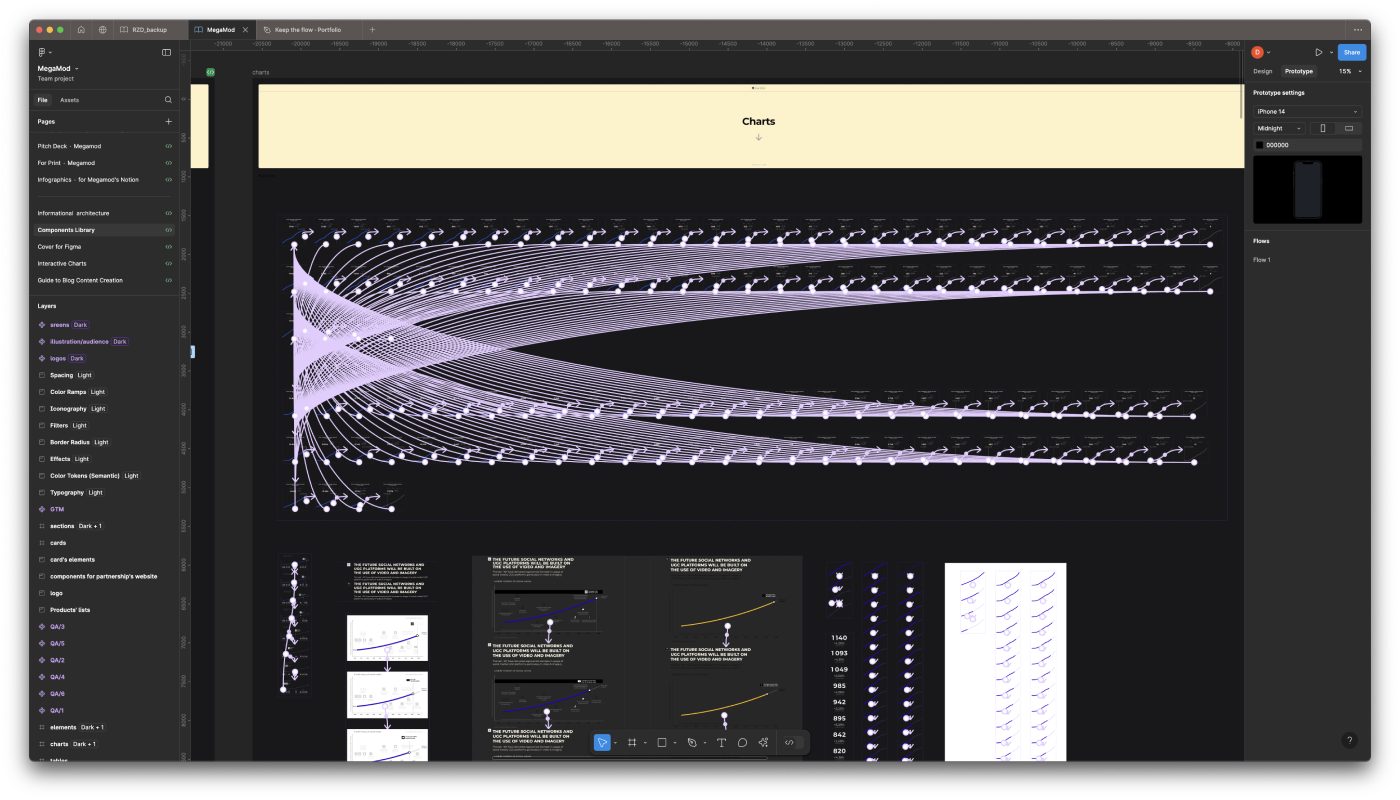
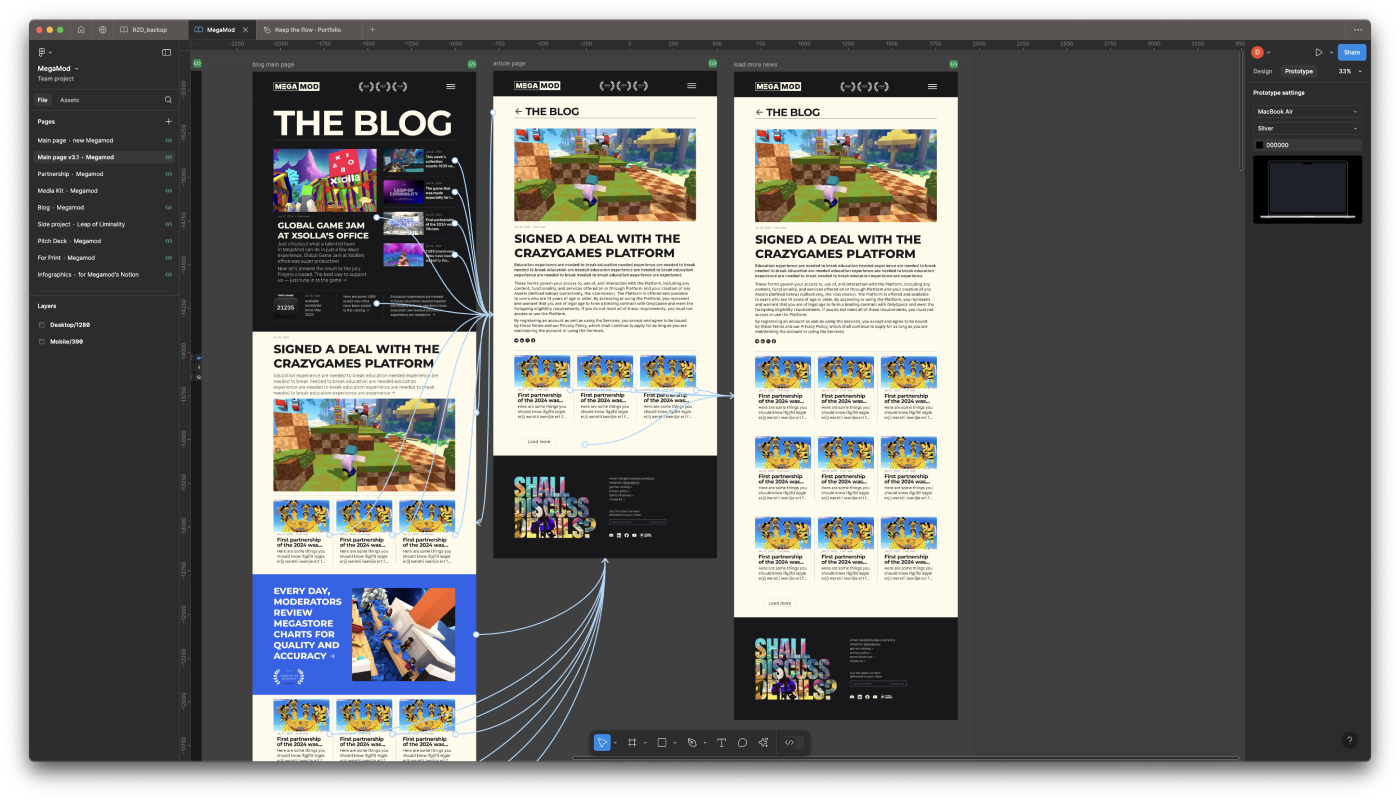
Fully component-driven system
The entire layout is structured using atomic design principles, ensuring consistent interface components and streamlining the maintenance and evolution of the project. To support this, I developed a comprehensive design system with over 66 styles and 150+ local variables. The system also includes more than 1,200 components and 183 component sets, enabling efficient scaling and adaptation as the project grows.
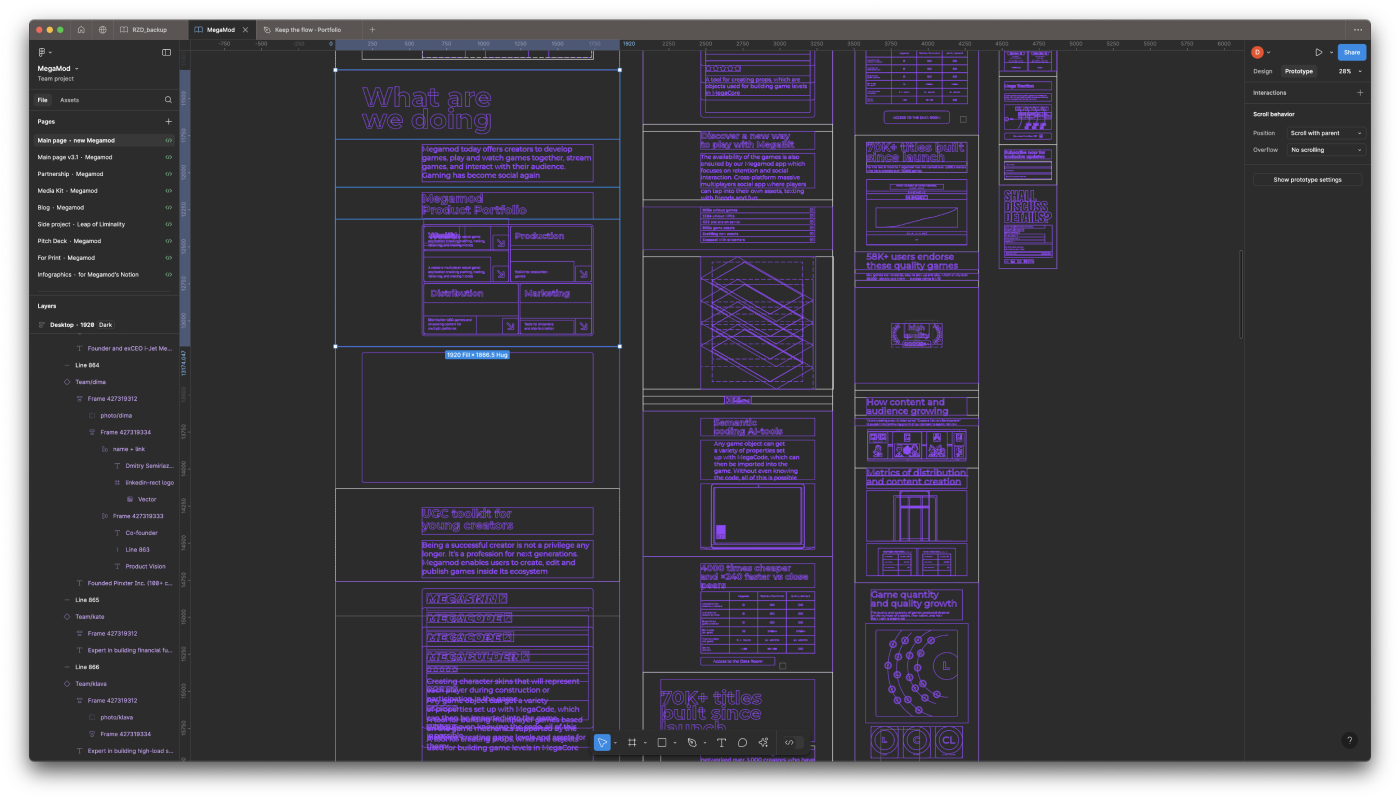
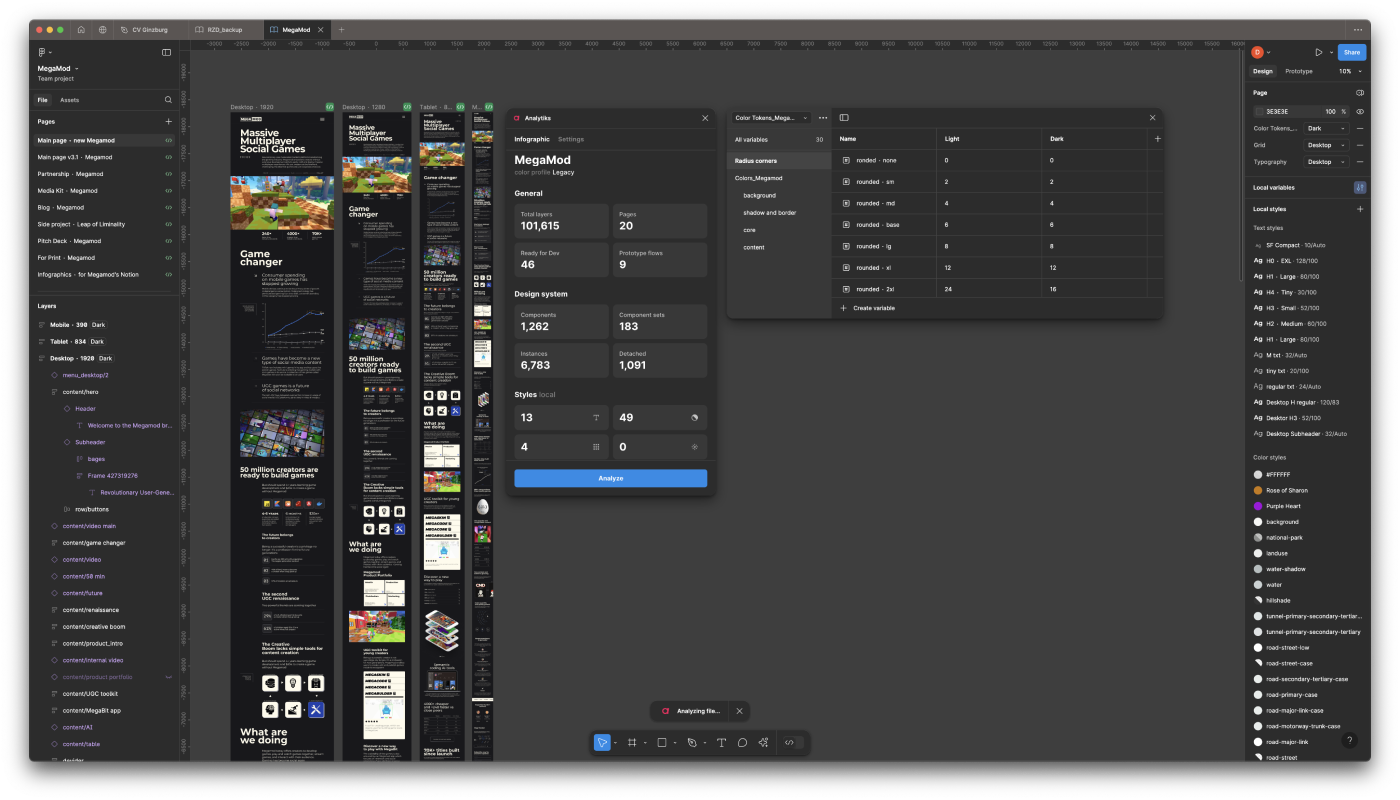
Mobile • Main page
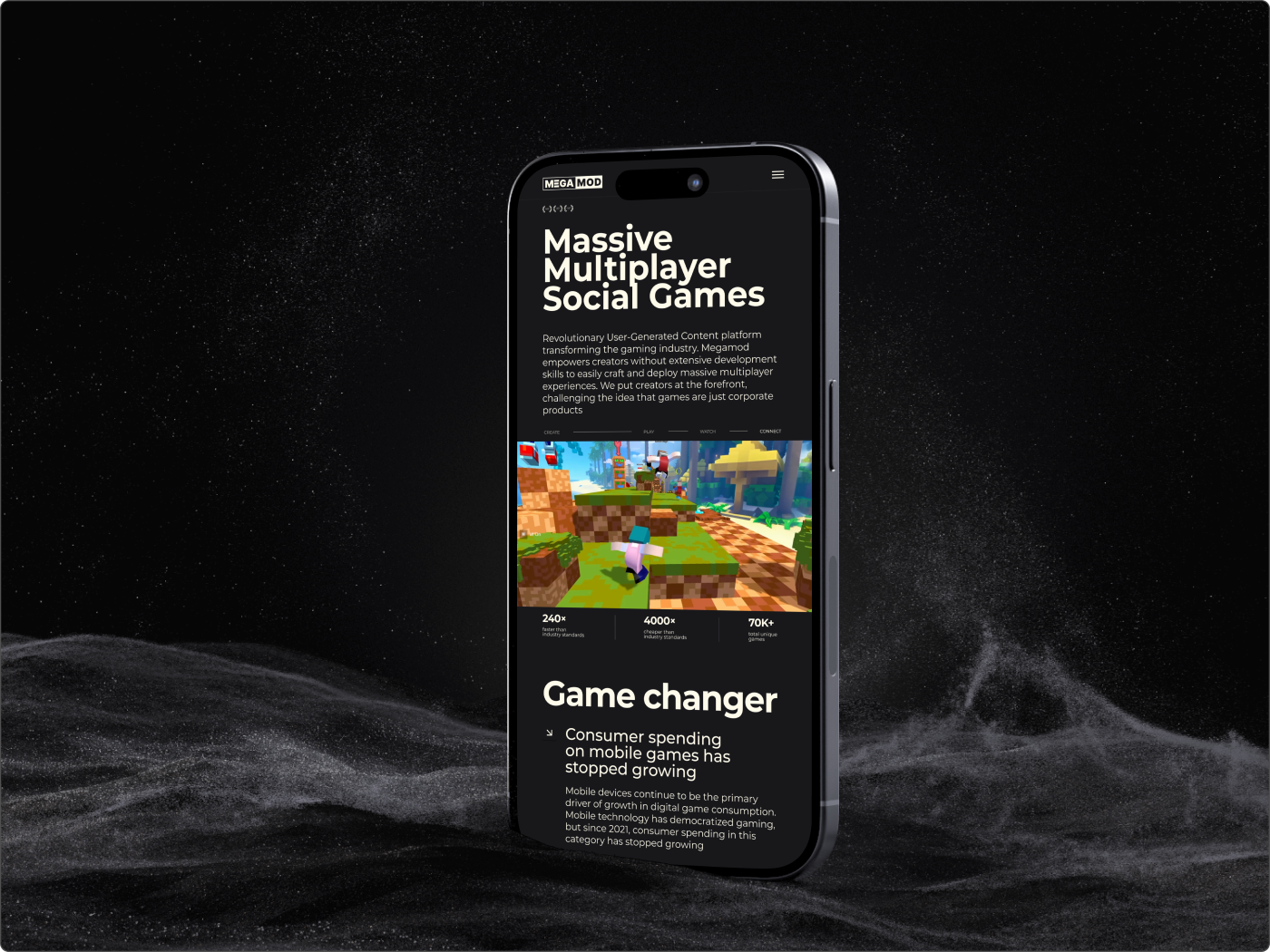
Tablet • Blog
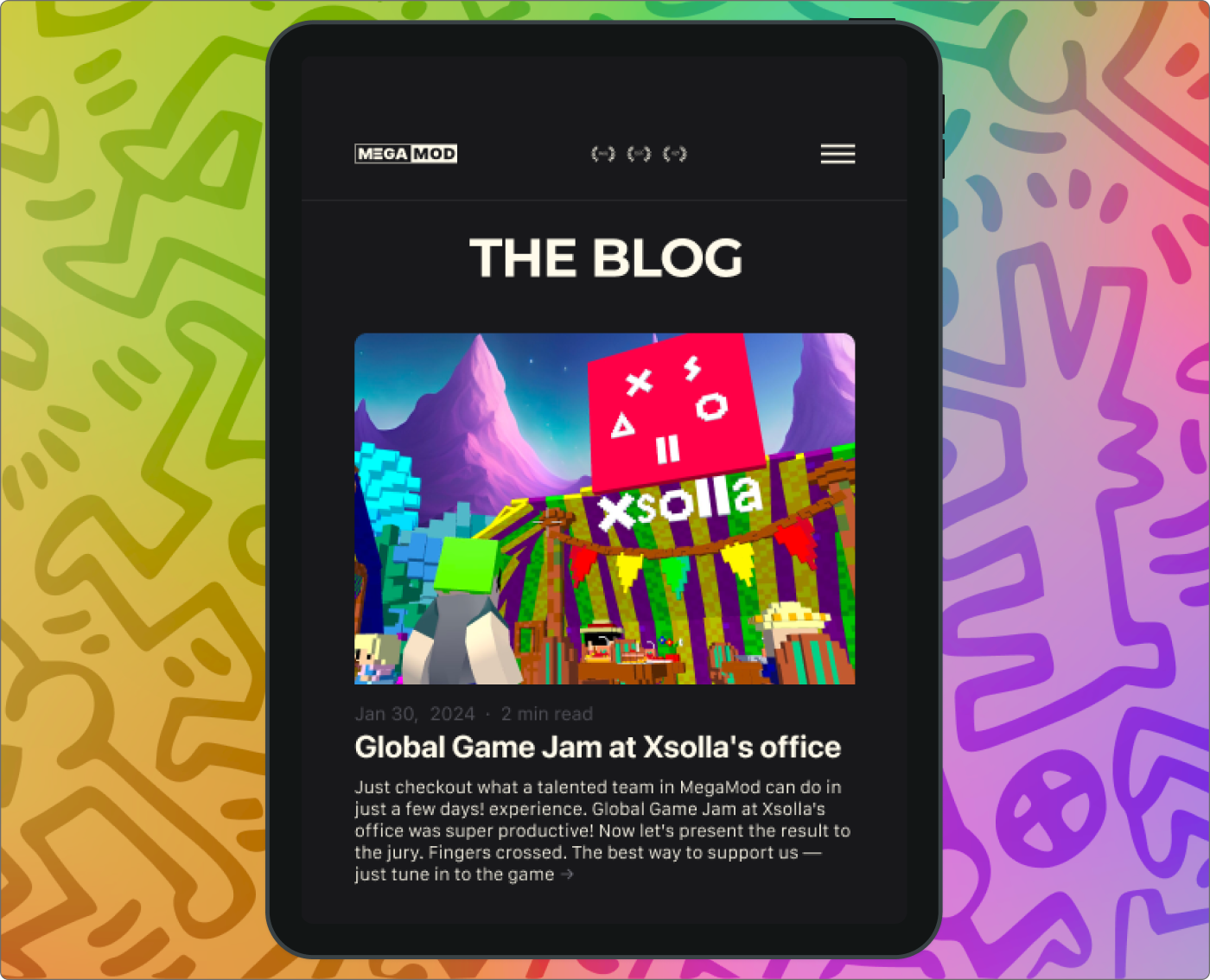
Desktop
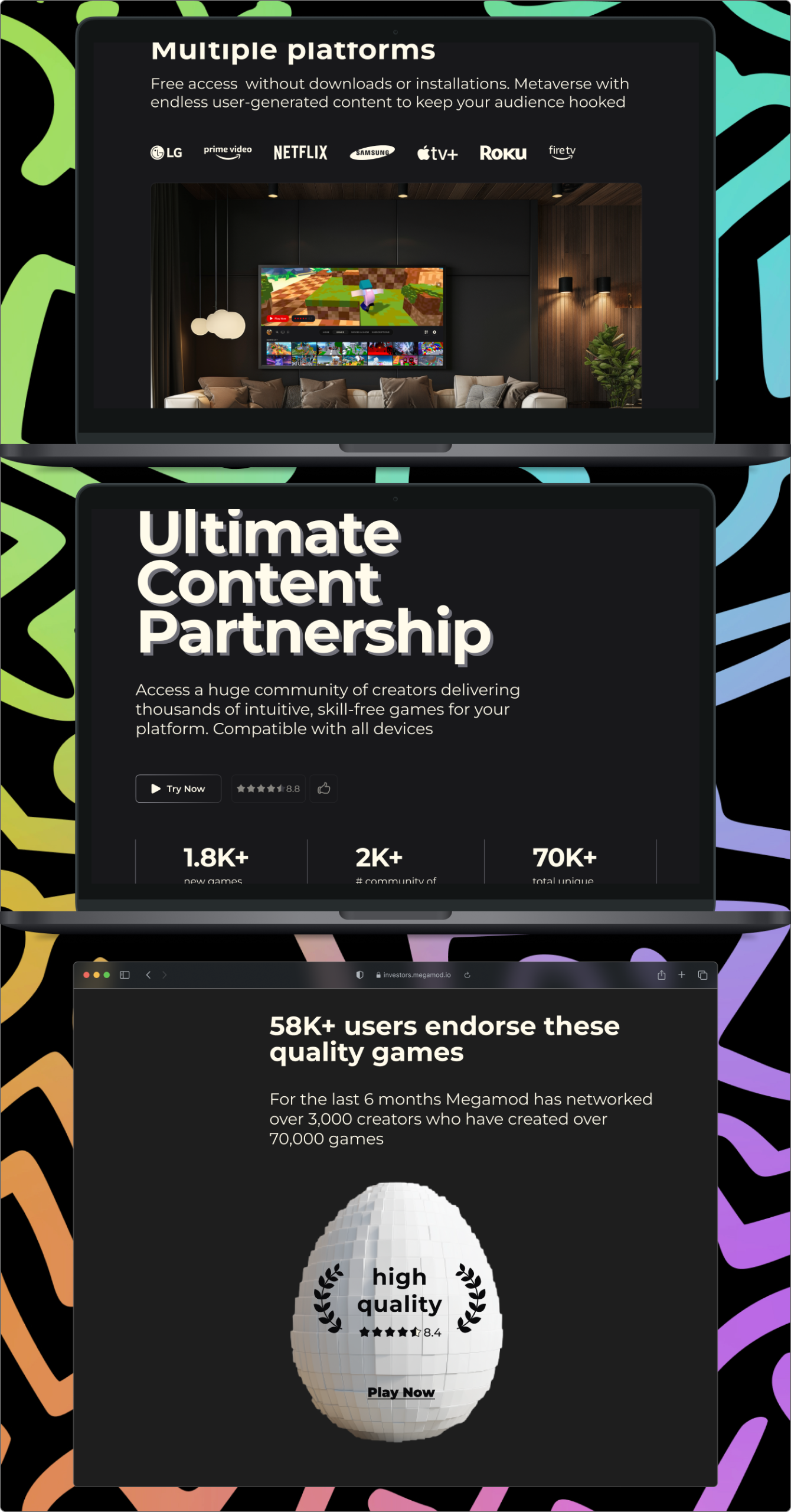
Desktop • Bottom
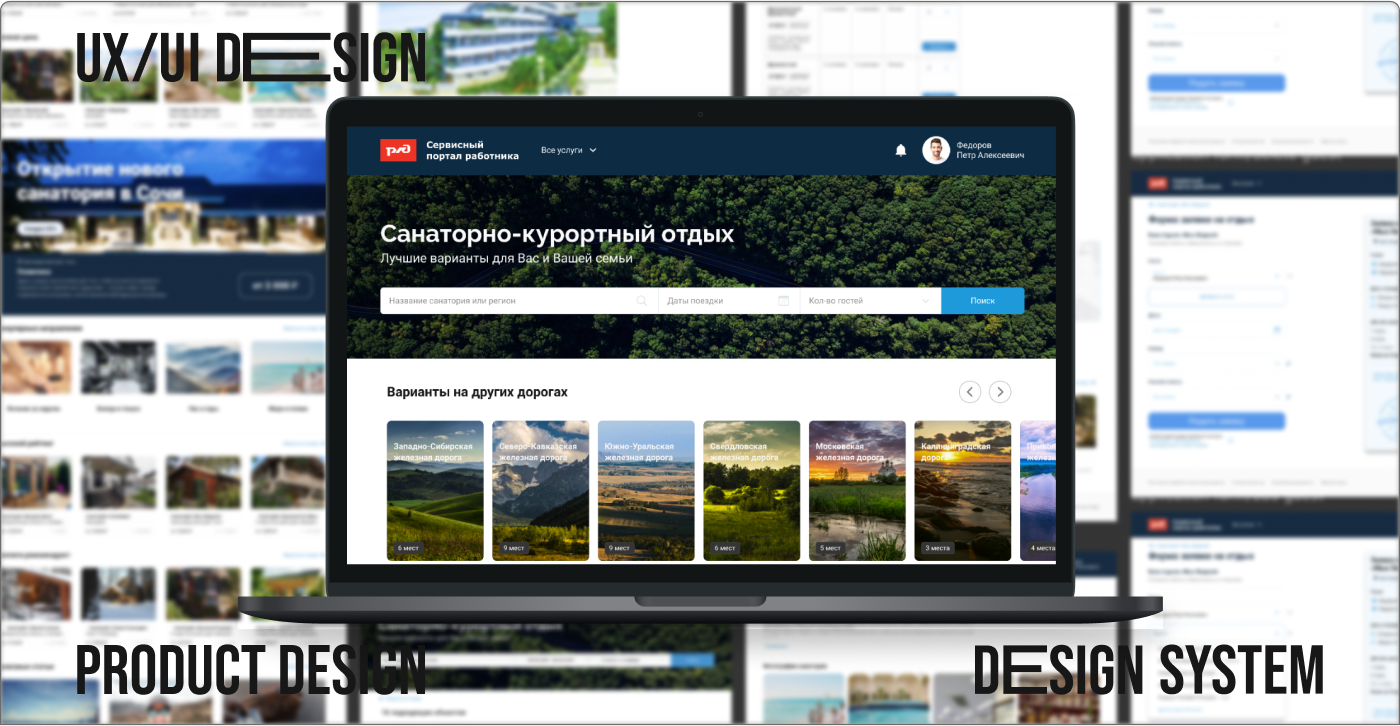
client
Russian Railways
year
2022
role
UX/UI Designer
overview
Redesigned internal digital service for 3M+ users at Russian Railways. This project involved a complete redesign, from mapping user interaction scenarios and building an information architecture to creating intuitive, user-centered interfaces. By developing detailed customer journey maps (CJMs), I identified key user touchpoints and streamlined processes to enhance overall usability.
challenge
Scalable Design System creation: modular foundation built to support similar services.
Deliverables
A fully reimagined service featuring a refined structure and interfaces that align closely with user needs and expectations.
detail #01
The complete redesign is based on 4 clearly defined user types identified during the initial design phase.
detail #02
Fully component-driven system. The project’s custom Design System allowed for quick adjustments and helped streamline redesigns of other services on the internal portal. The entire layout is structured using atomic design principles, ensuring consistent interface components and streamlining the maintenance and evolution of the project. To support this, I developed a comprehensive design system with over 131 local styles and 200+ variables. The system also includes more than 17,780 components and 2,241 component sets, enabling efficient scaling and adaptation as the project grows.
Workflow
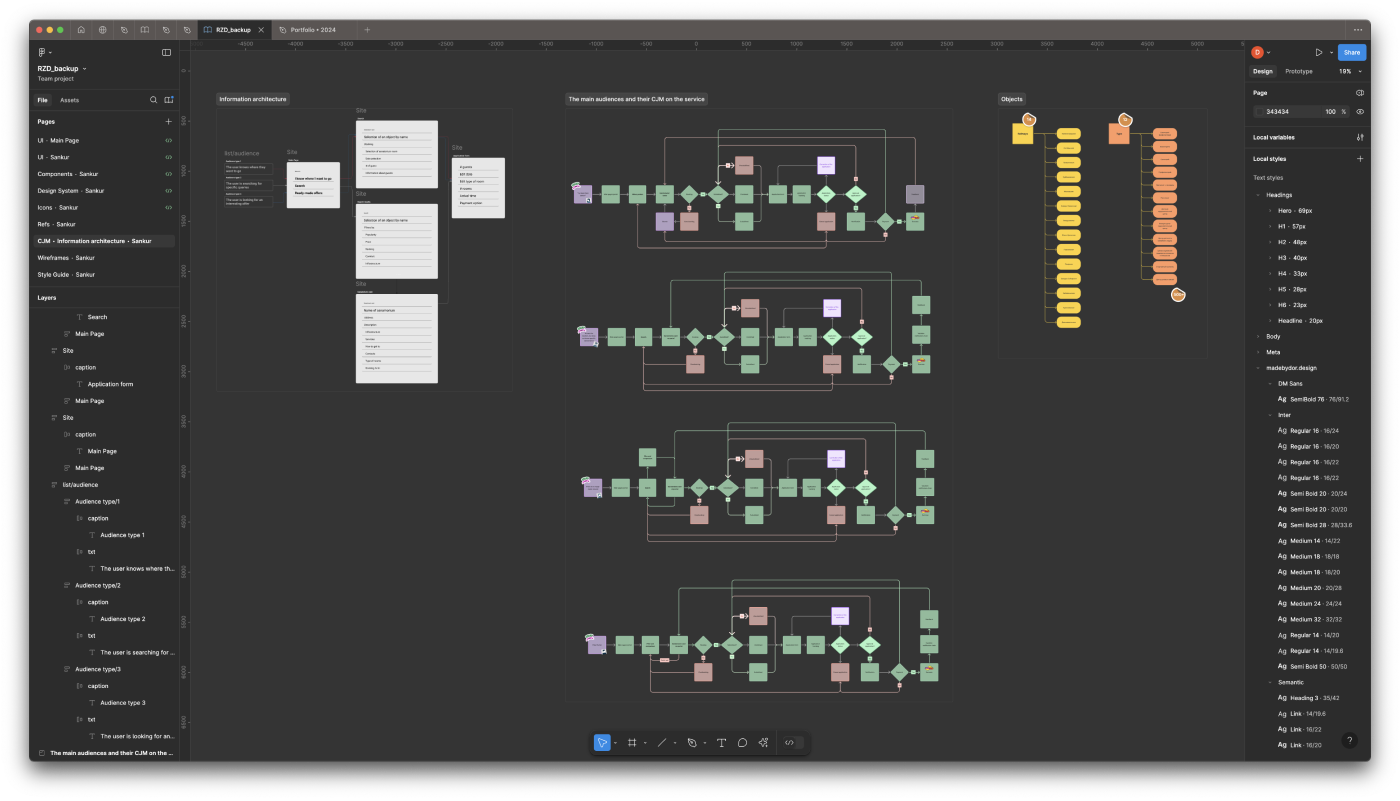
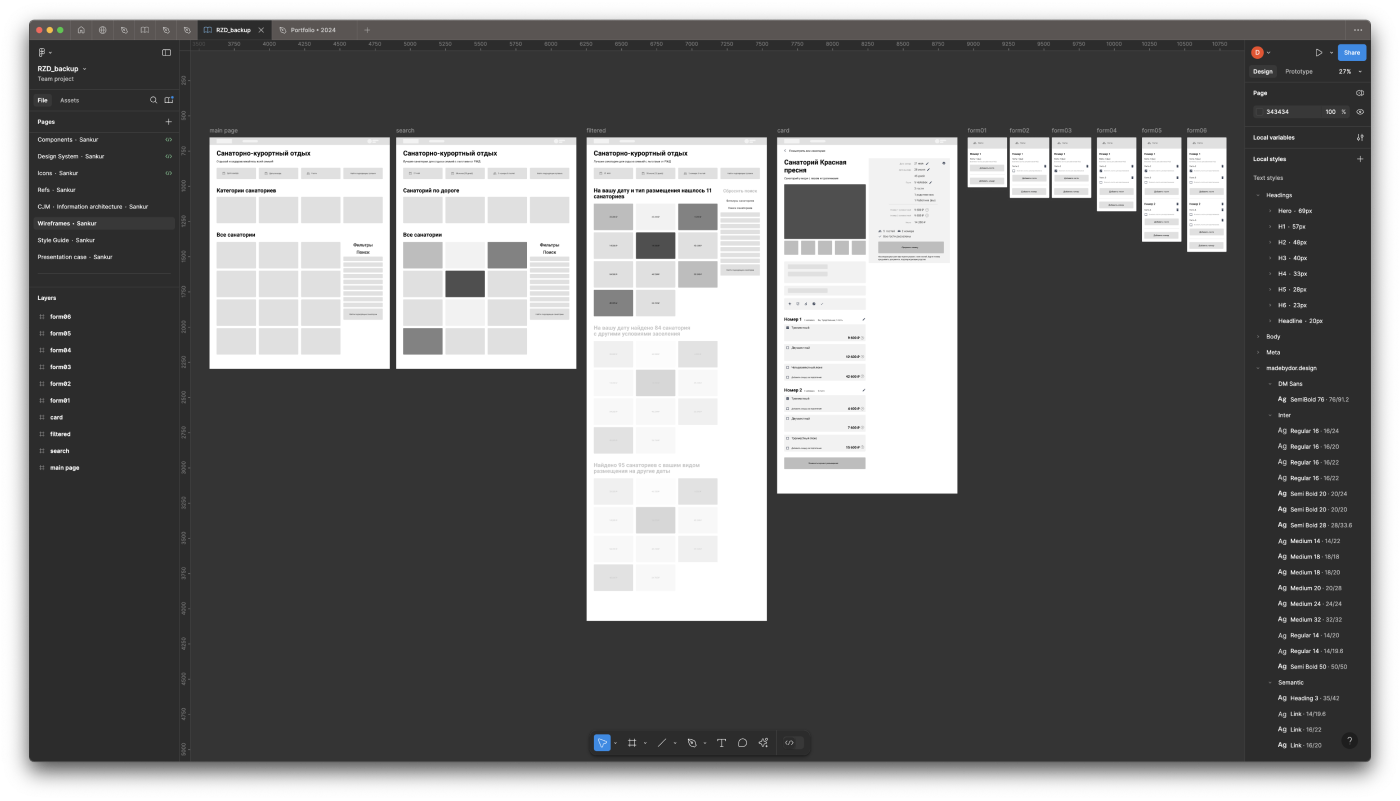
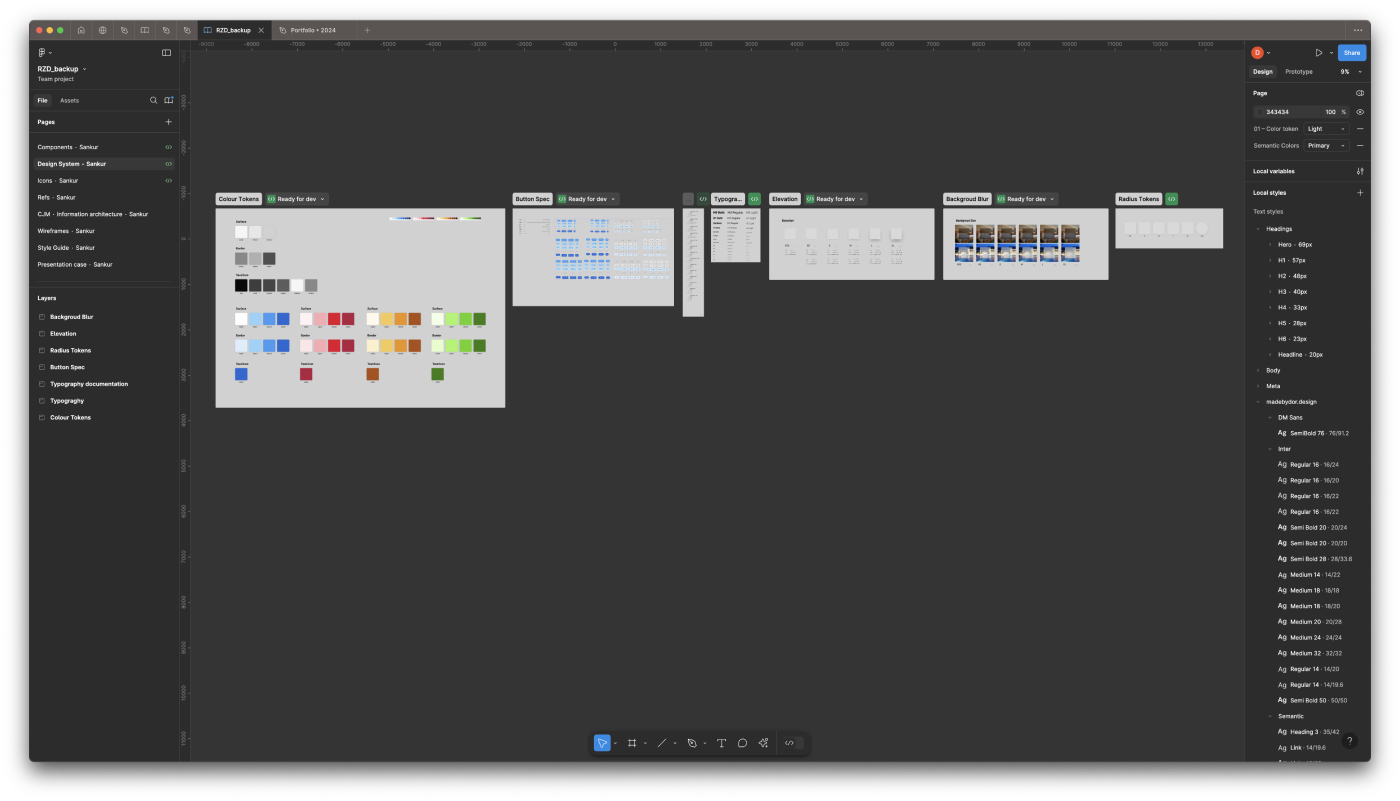
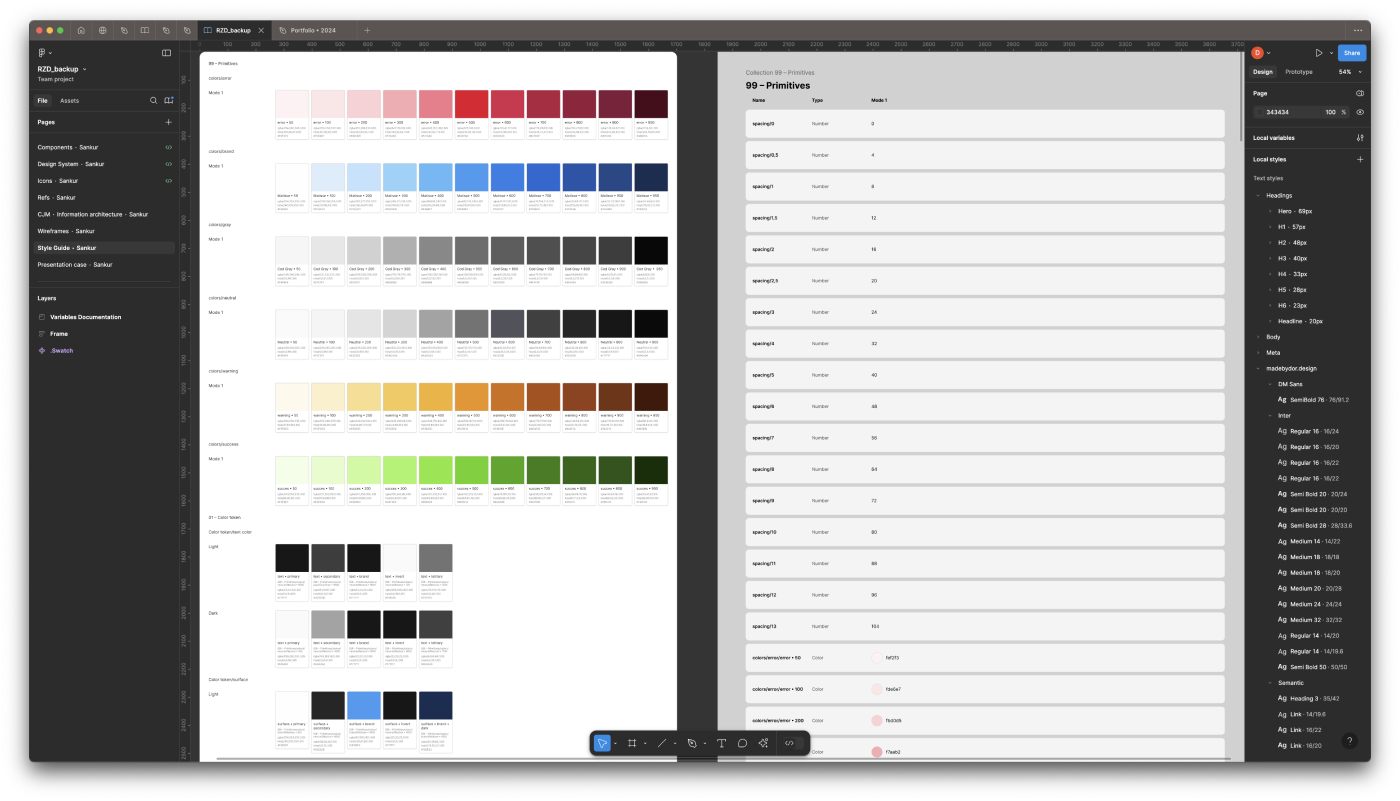
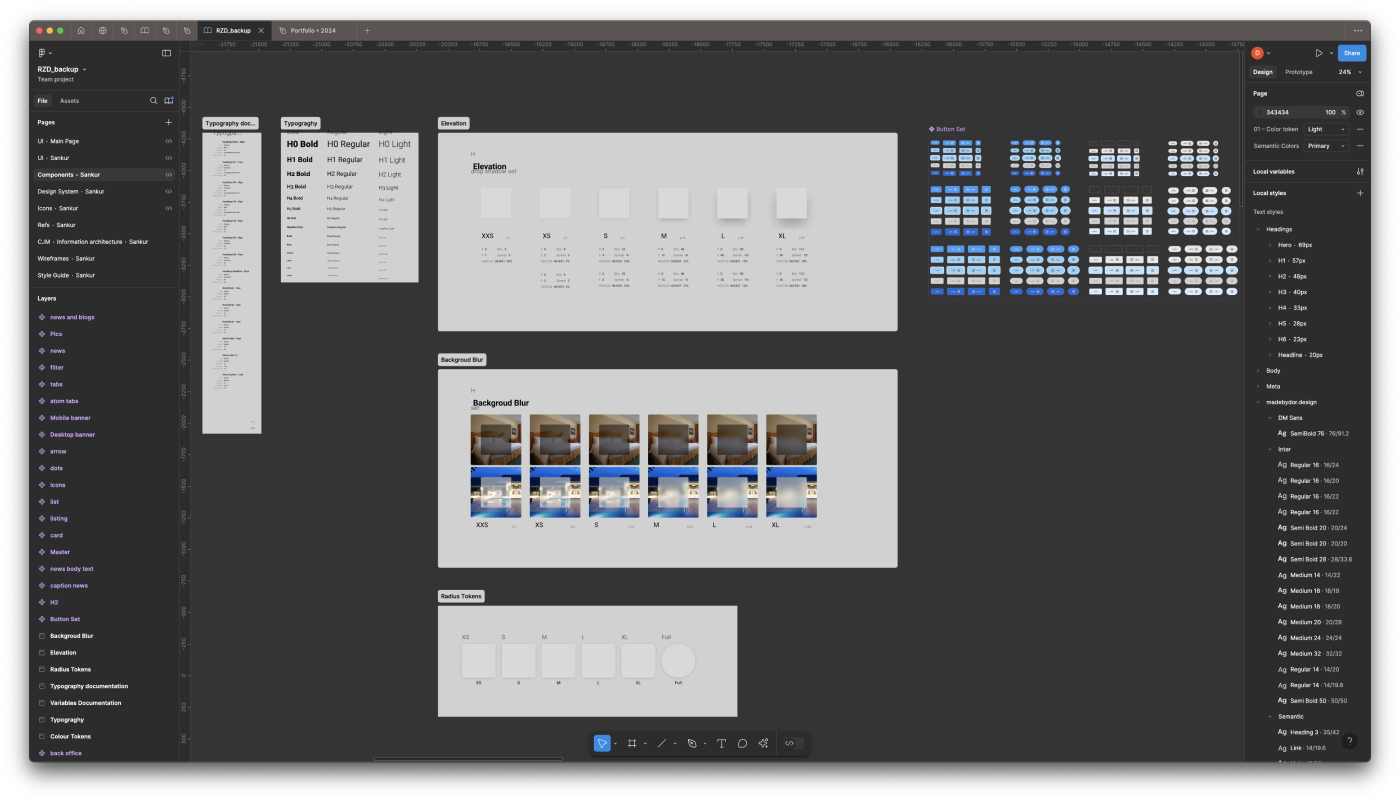
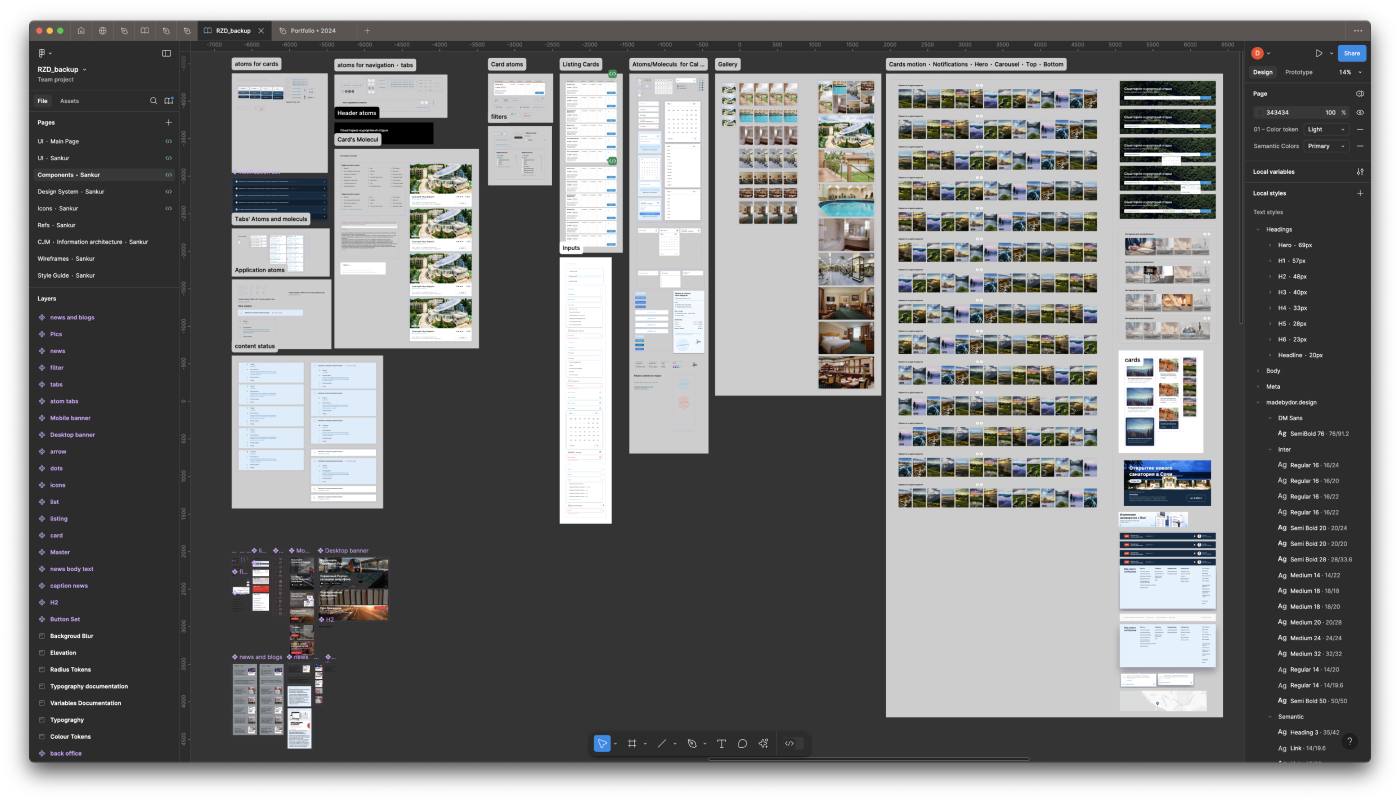
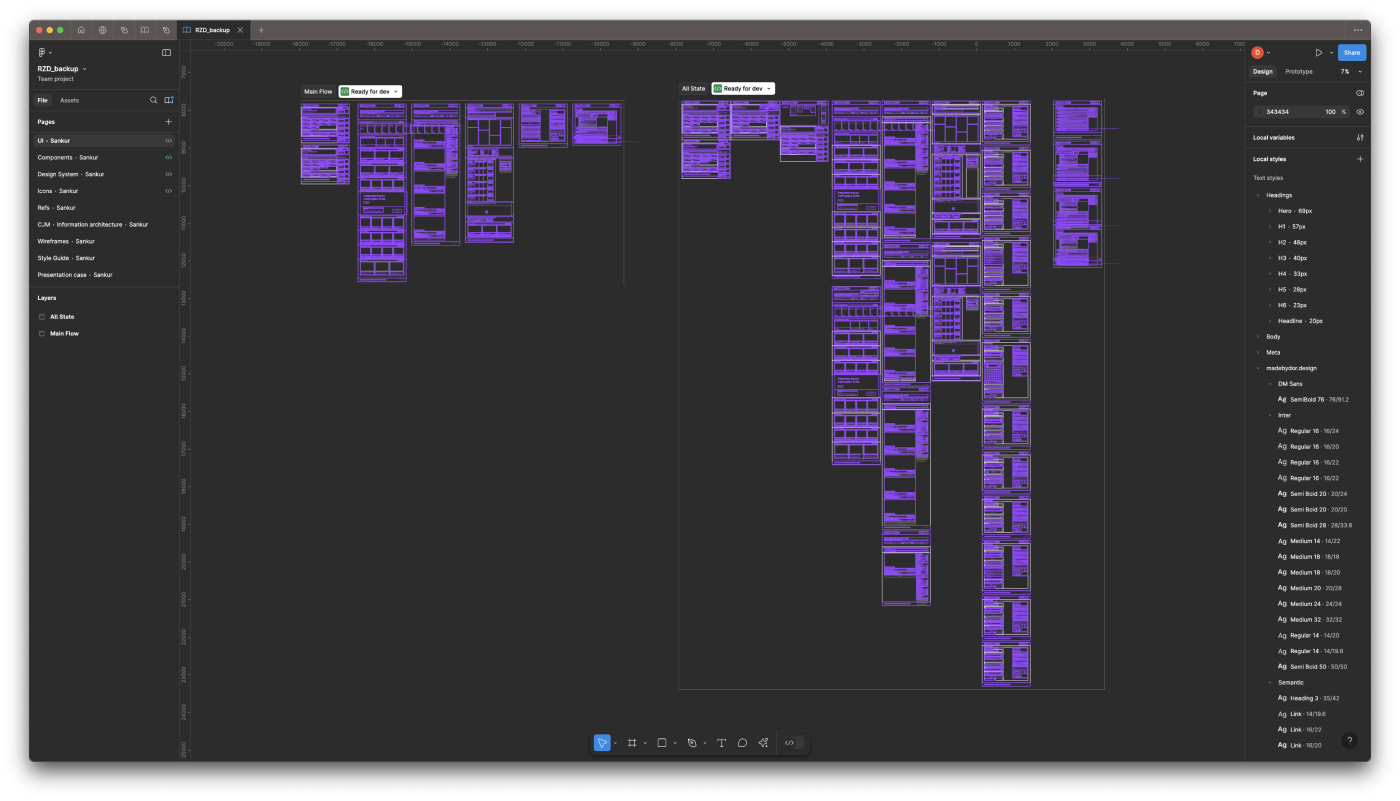
Interactive Prototyping
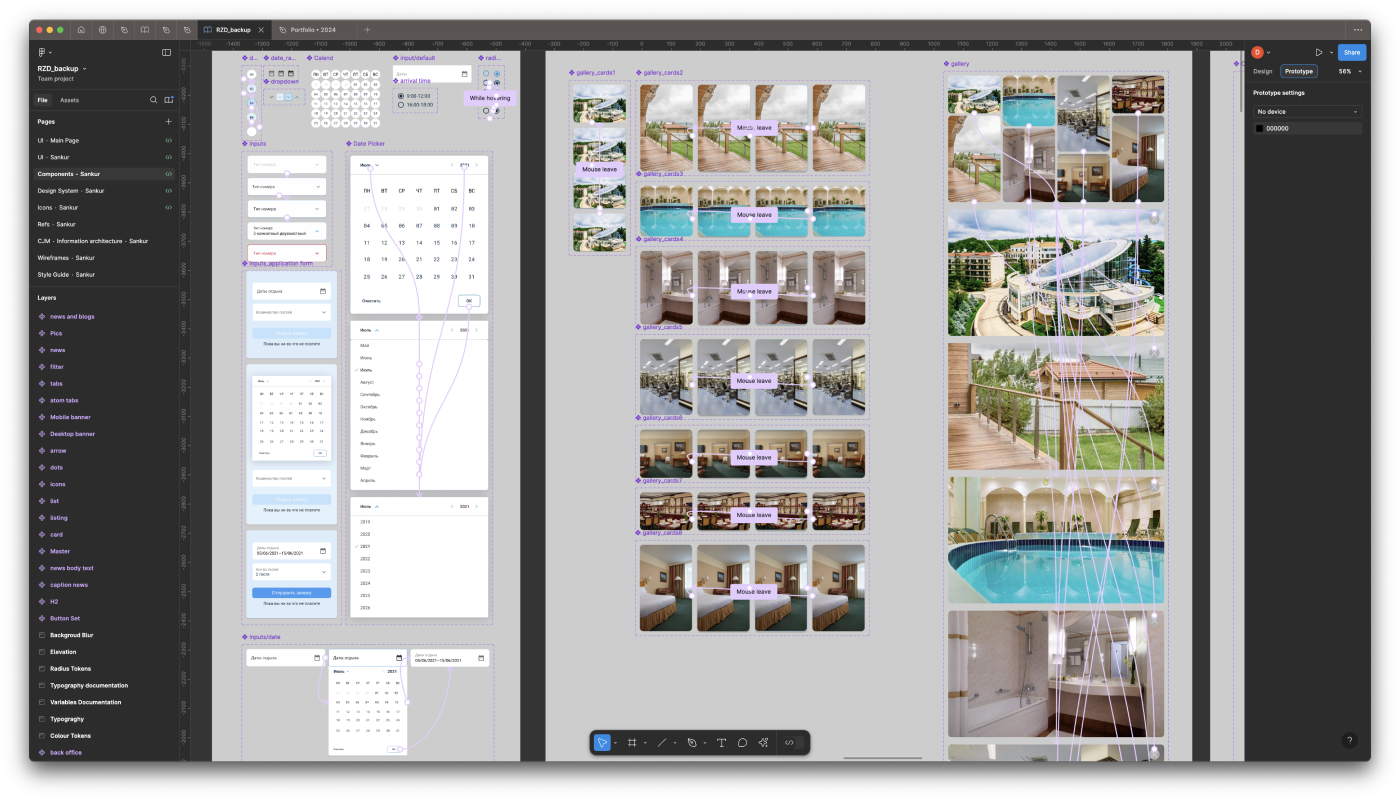
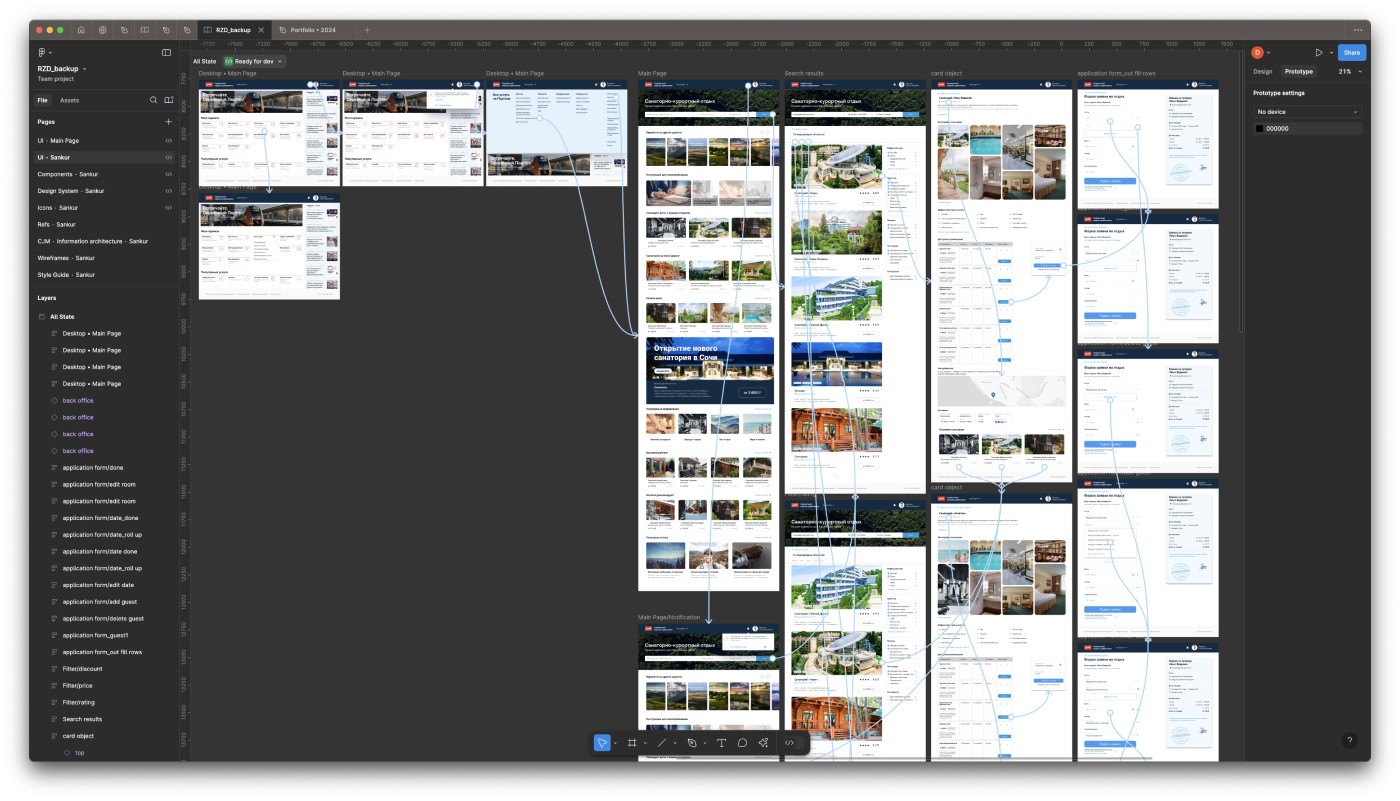
Interactive Prototyping
The entire layout is structured using atomic design principles, ensuring consistent interface components and streamlining the maintenance and evolution of the project. To support this, I developed a comprehensive design system with over 131 local styles and 200+ variables. The system also includes more than 17,780 components and 2,241 component sets, enabling efficient scaling and adaptation as the project grows.
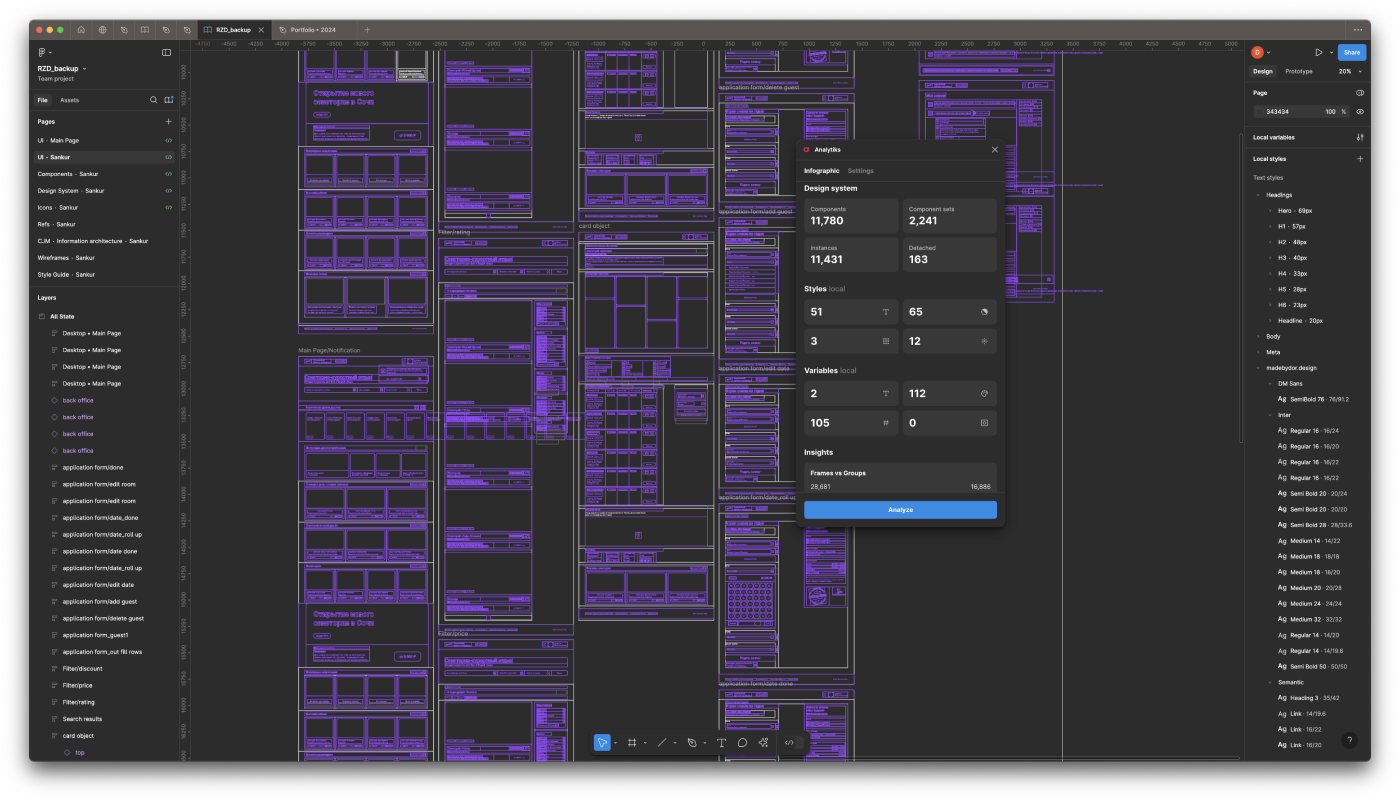
Main Page

Card
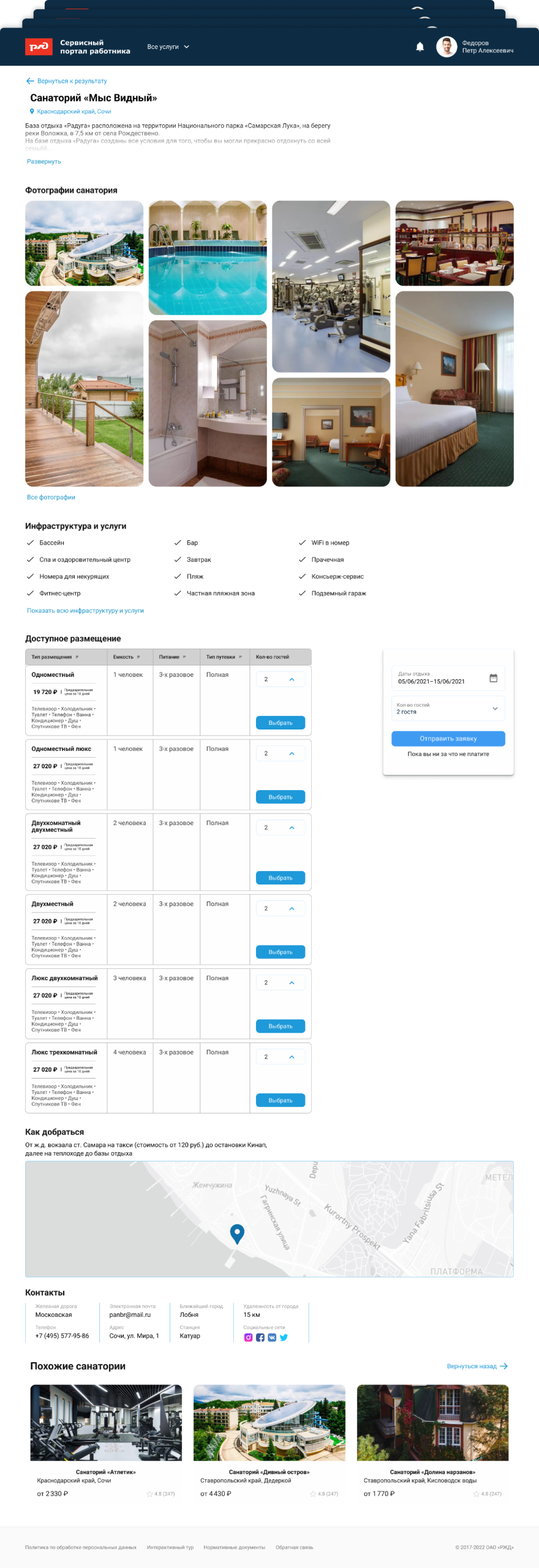
Search Results
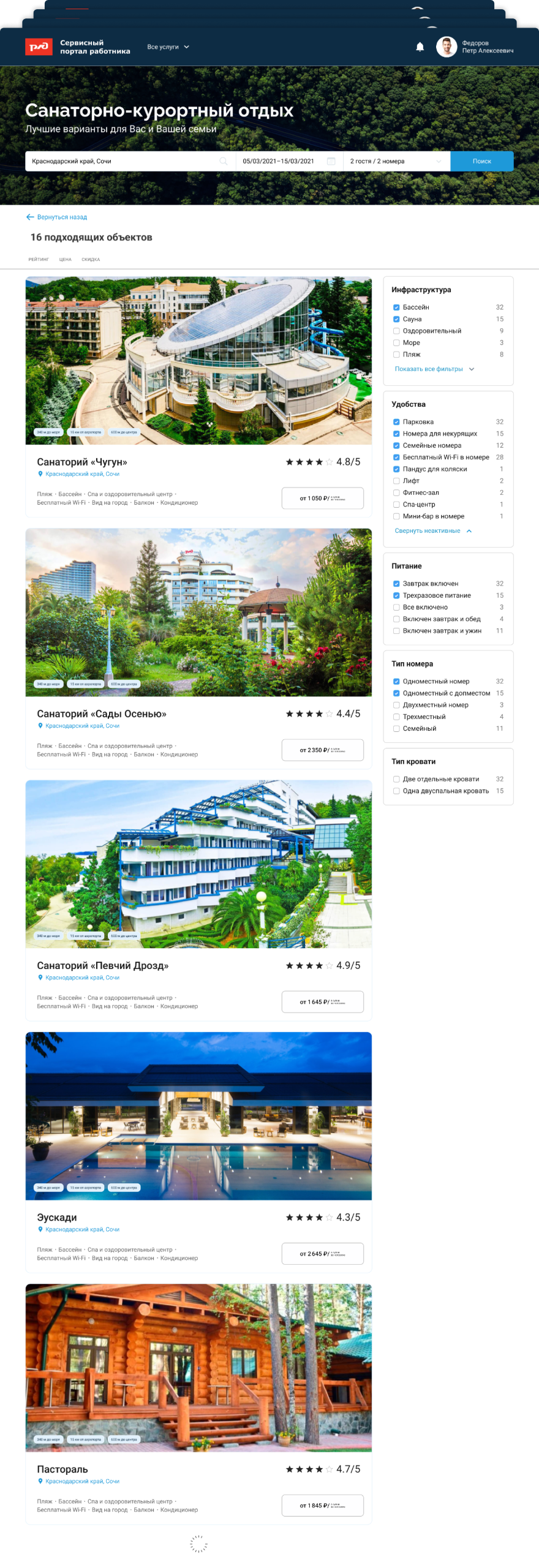
Application Form
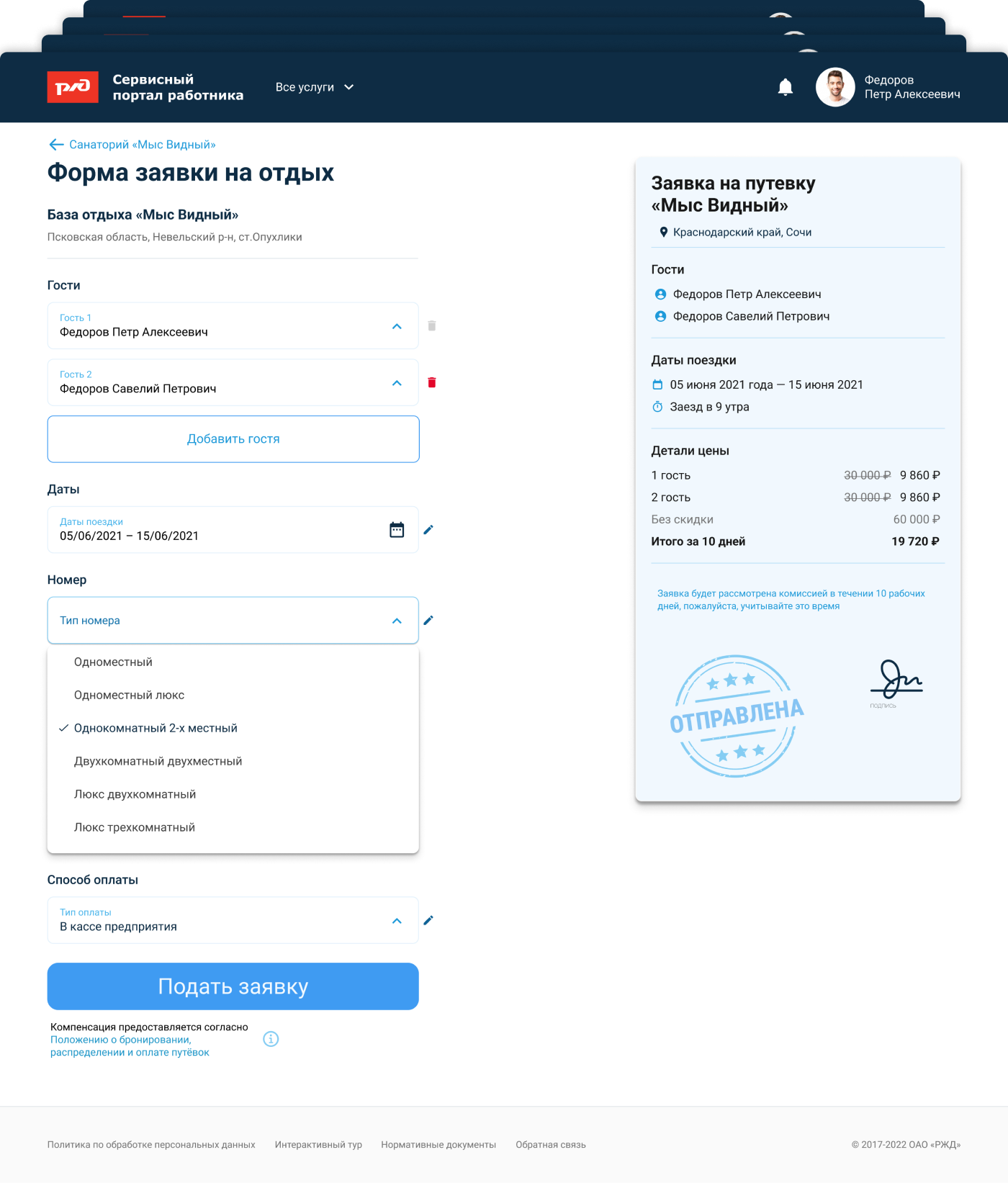
Tracking Application
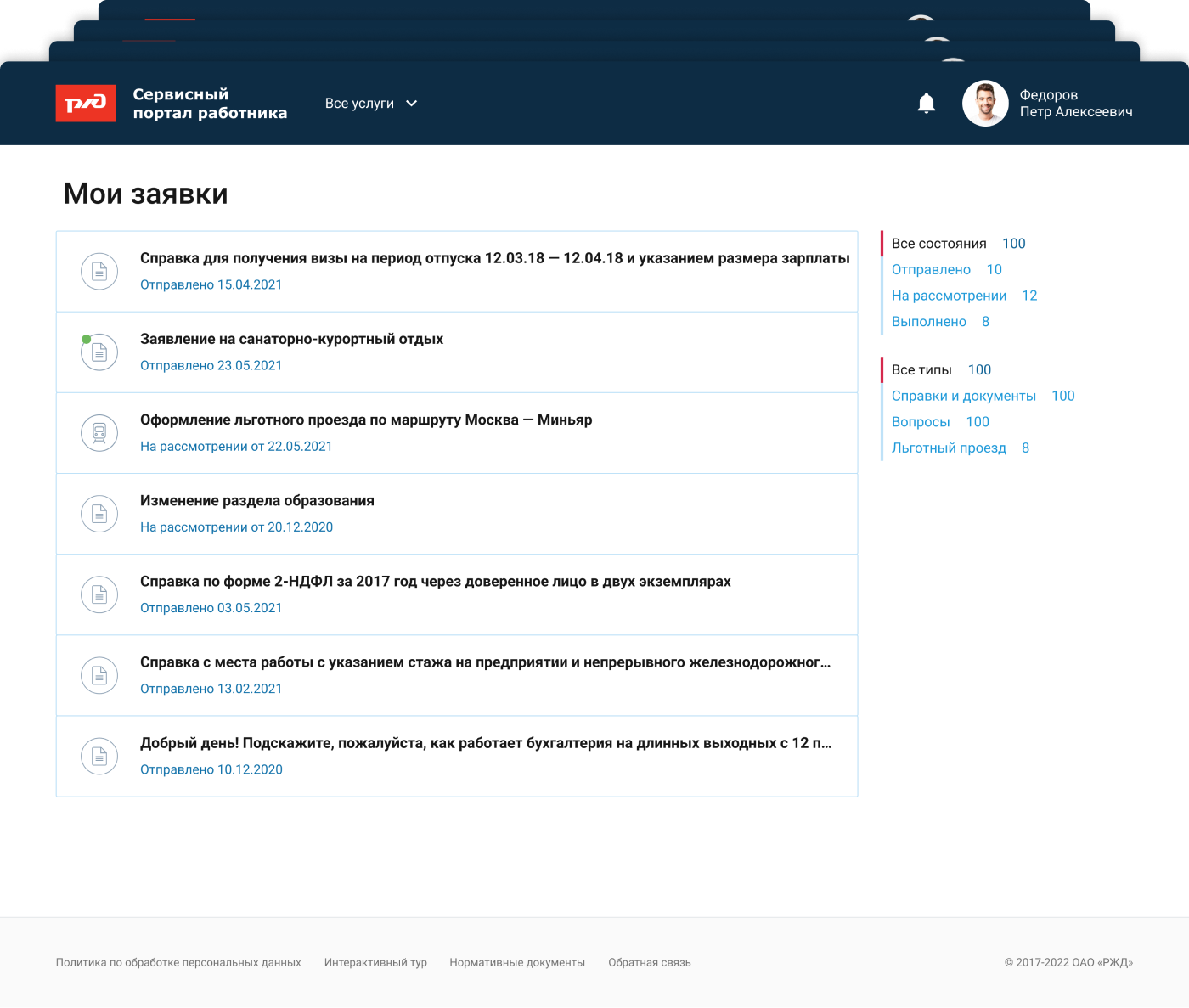
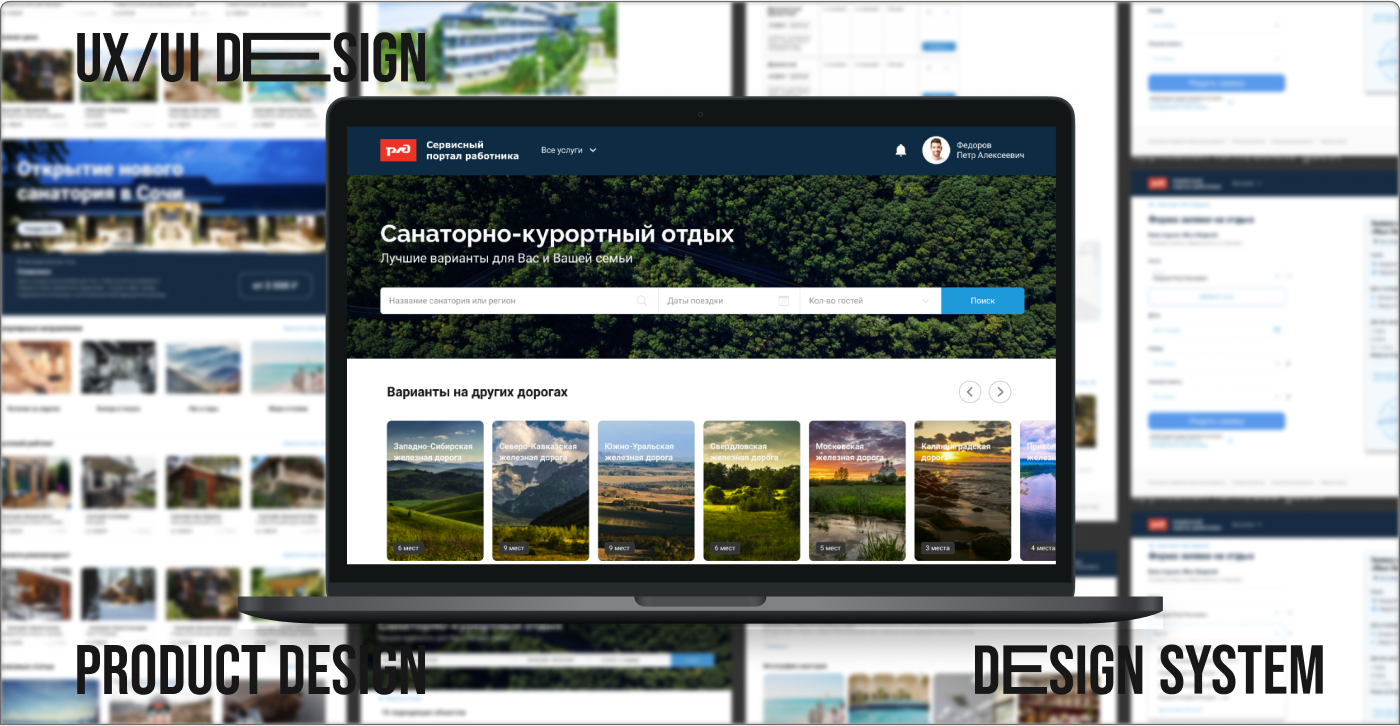
client
Russian Railways
year
2021
role
Product Designer
overview
This is a core document management and executive communication service, designed to accelerate company decision-making and streamline approvals. The service had a vast and deeply layered legacy, making navigation complex, with outdated functionality and user flows. A full redesign was necessary, adhering to the stakeholder’s strict constraints: as a B2B product, every design element had to be purposeful, functional, and concise. The resulting design is minimal and highly efficient, built directly on the existing database and information architecture to ensure seamless integration and optimal usability.
challenge
The challenge was to design an application that rigorously met the strict requirements of a B2B solution—purpose-driven and highly functional within an enterprise environment—while fully adhering to user-centric design principles. The result is a solution that harmonizes the company’s operational needs with an intuitive, user-focused experience.
Deliverables
A fully reimagined mobile version of the service with an optimized structure and interfaces that not only align with stakeholder requirements but also address user needs effectively.
detail #01
Developed a fully interactive prototype in Figma, enabling the emulation of app functionality and conducting in-depth usability testing directly within Figma. This approach provided early user feedback, allowing for improvements at the design stage, optimizing the user experience, and reducing iteration time
detail #02
Nearly all graphics were minimized in the application, aligning with stakeholder constraints. Instead, typography, composition, and contrast were used strategically to maintain an engaging emotional impact for the user.
Workflow
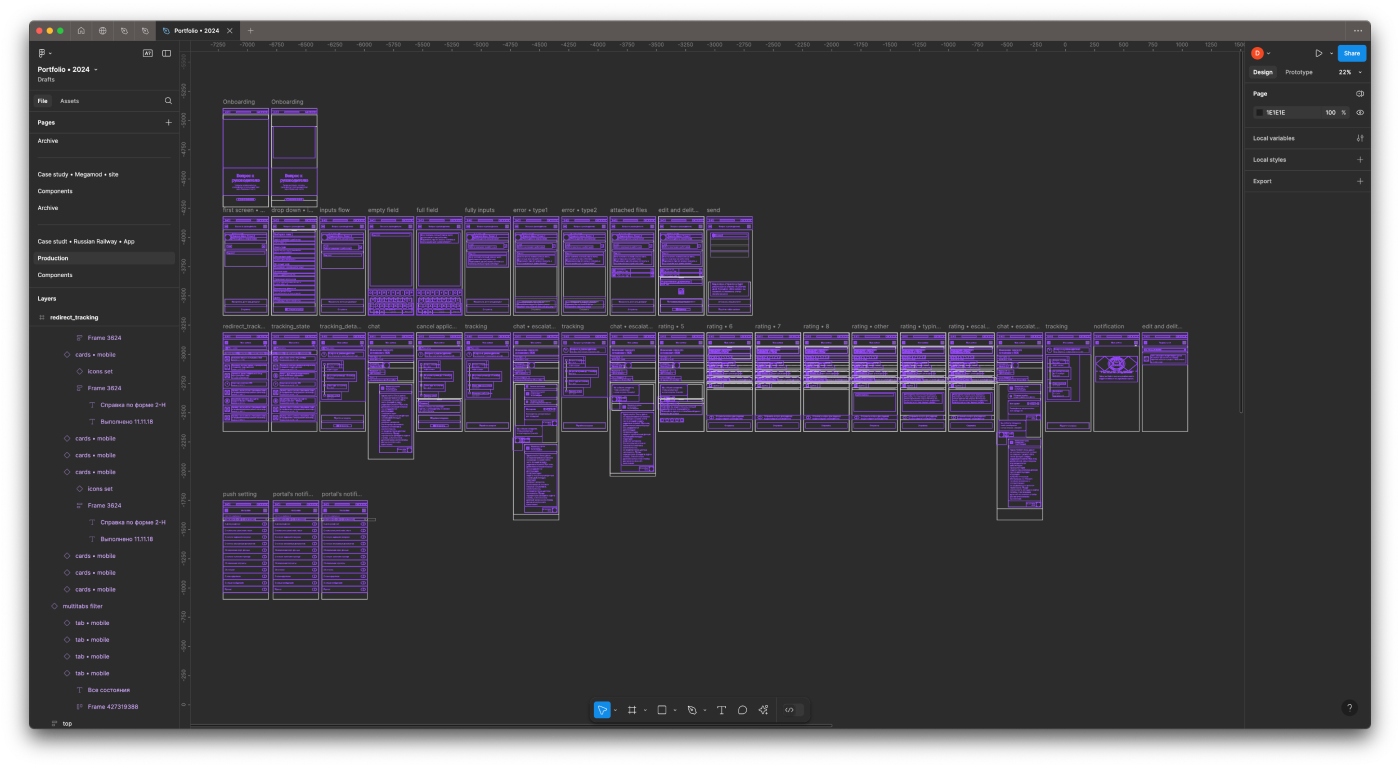
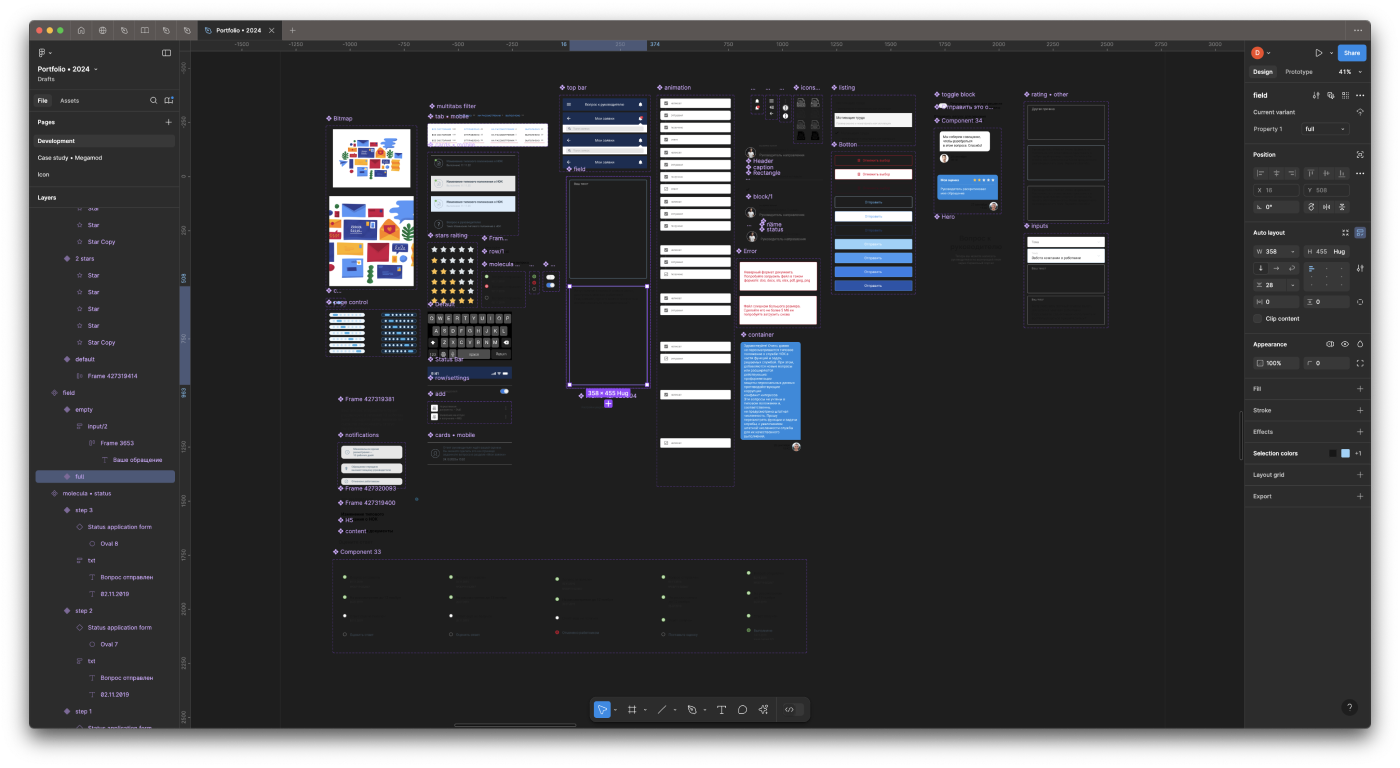
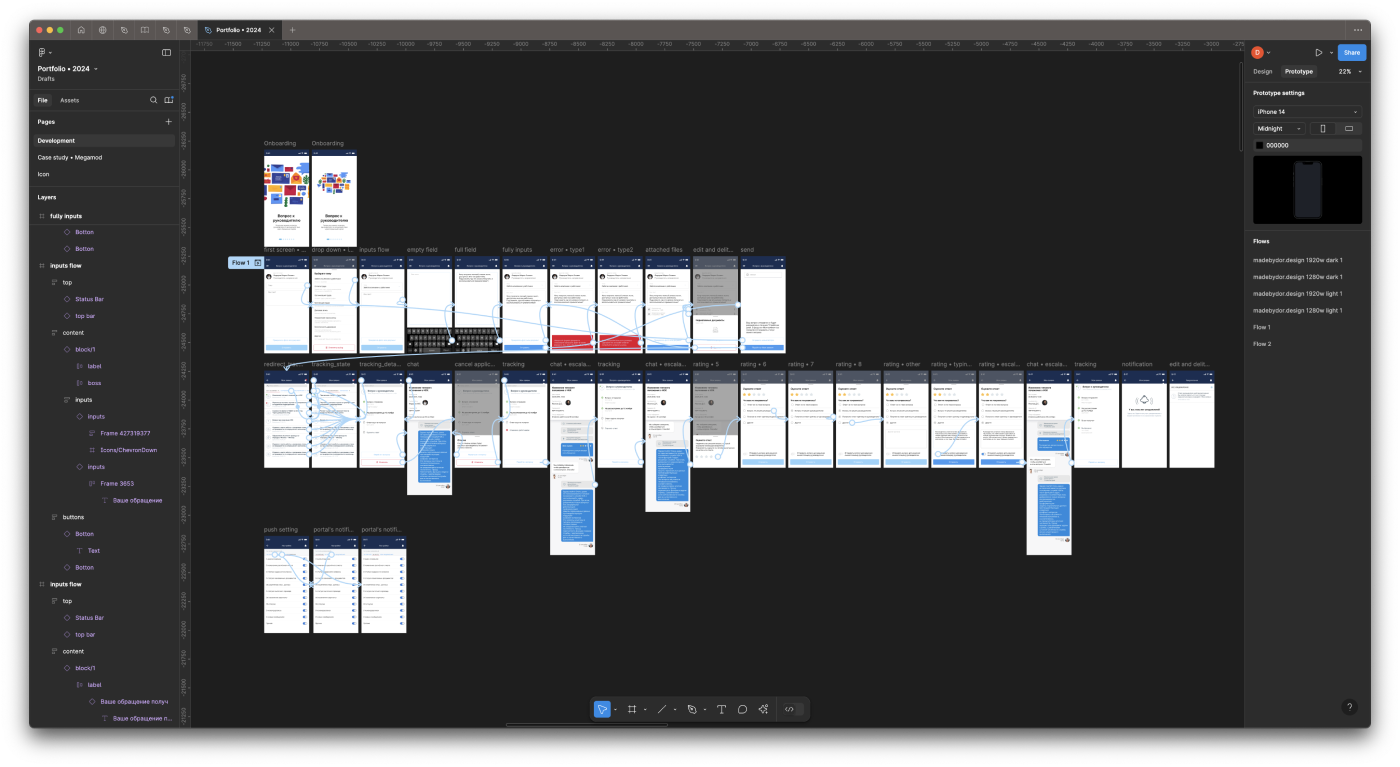
App Screen Examples
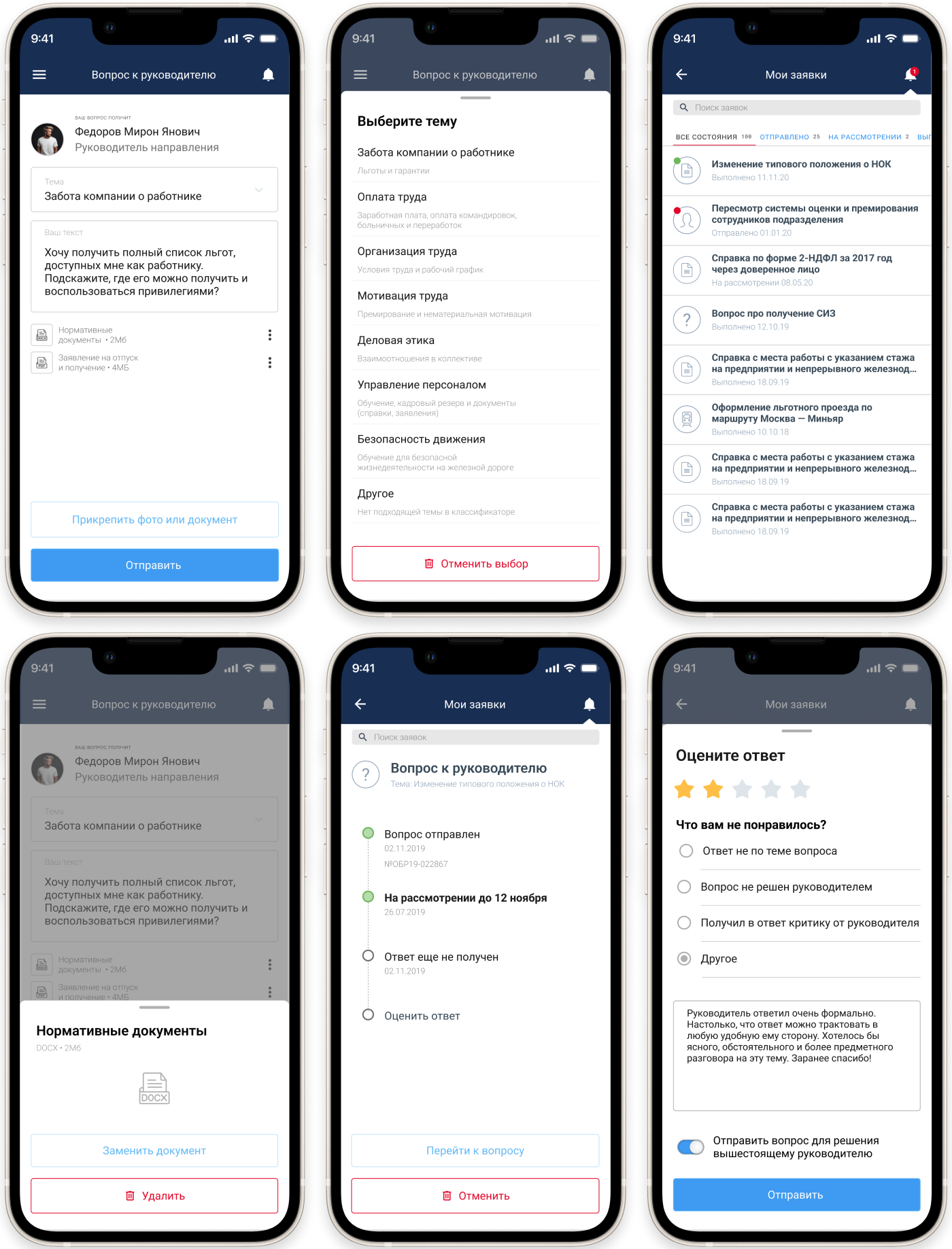
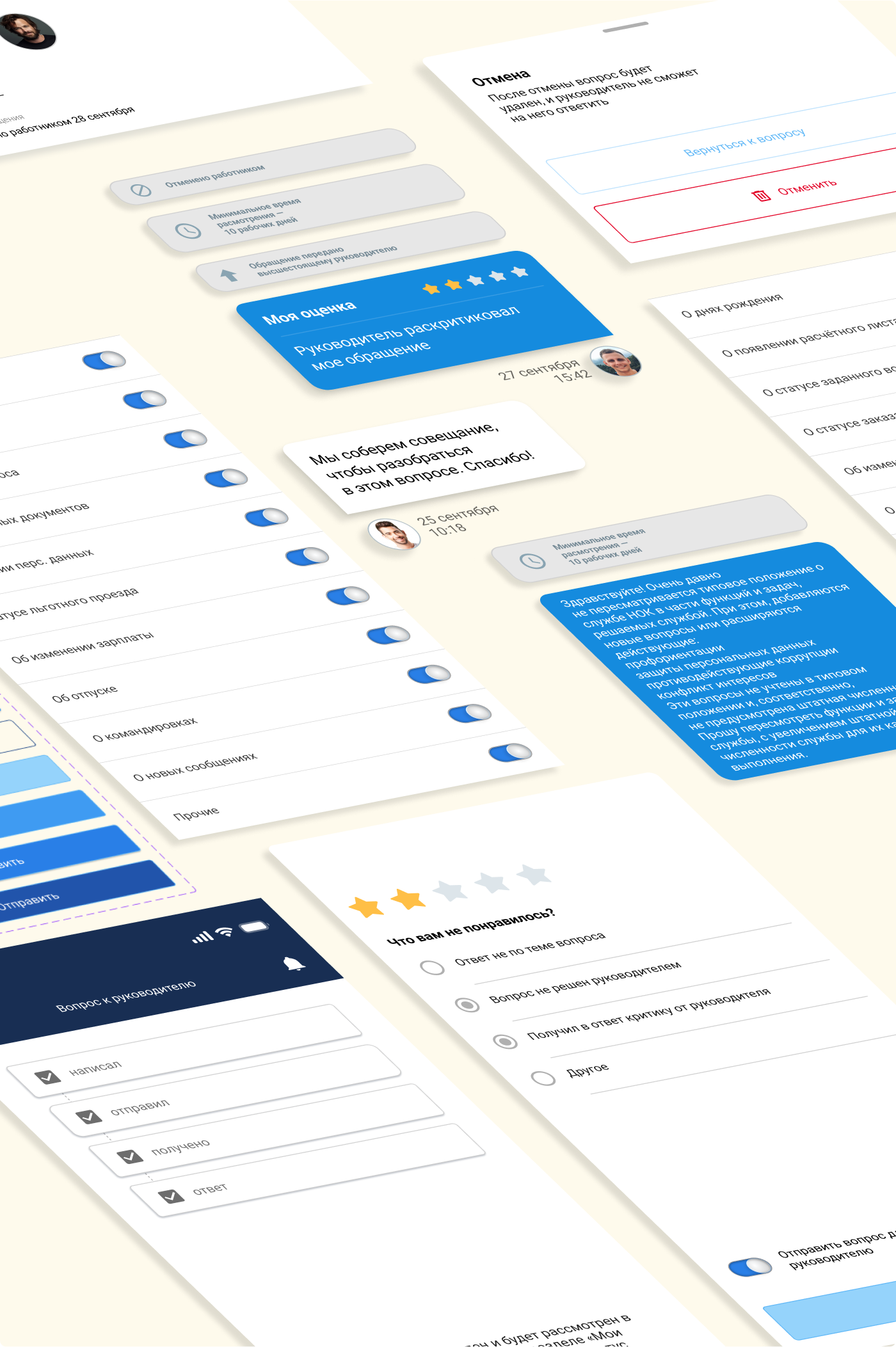
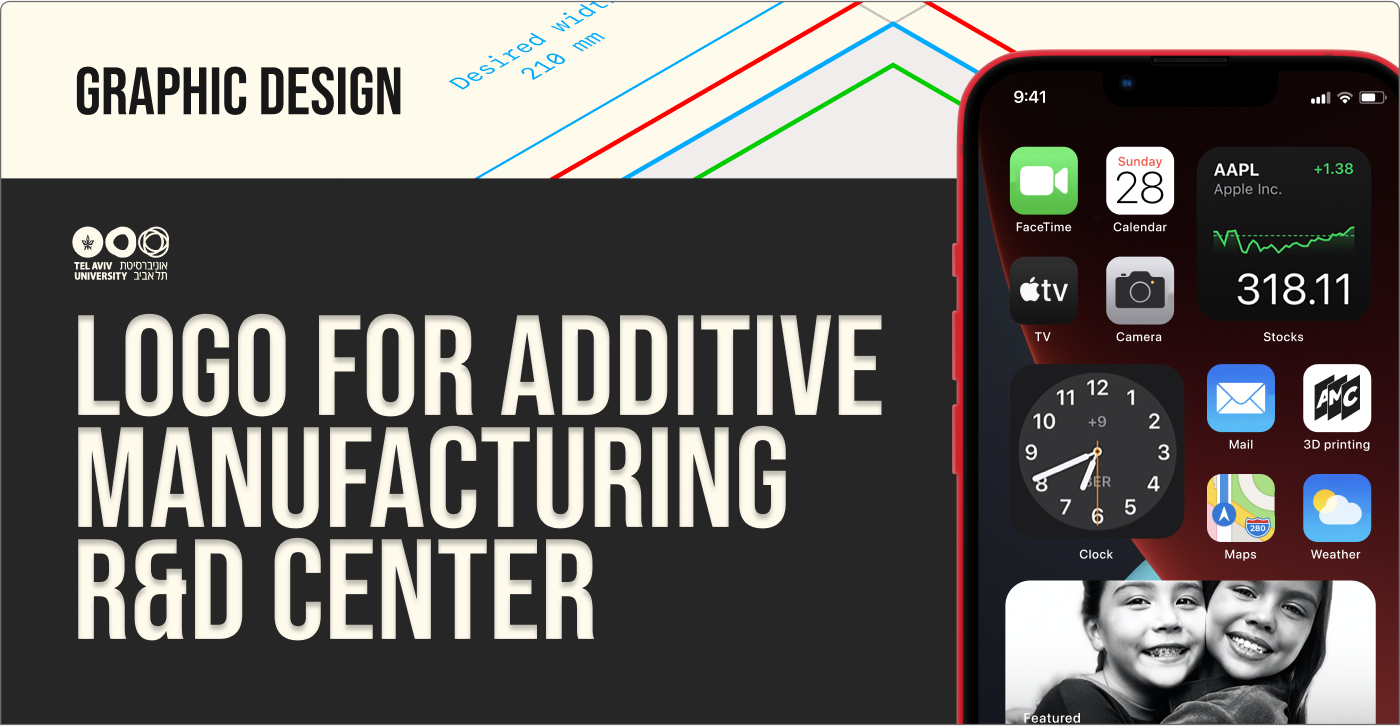
client
Tel Aviv University • AMC
year
2023
role
Graphic Designer
overview
Developed a logo for the Tel Aviv University 3D Printing Lab, which had previously used the university’s branding. As the lab gained prominence, it required its own visual identity while maintaining a link to the university. Through several stakeholder iterations, the final design incorporated the concept of layered printing as the lab’s visual code foundation.
challenge
The 3D Printing Lab’s identity highlights its specialization, strengthens recognition, and reinforces its perception as an innovation hub. The challenge was to design an identity that conveys the lab’s expertise in additive technologies while remaining accessible to a broader audience.
Deliverables
The developed brand identity positions the lab as an independent brand. In the initial phase, we maintained a “subsidiary” connection with the university, but as the lab grows, the brand can easily evolve beyond this association. Additionally, the layered concept is highly accessible, broadening the brand’s appeal from a niche professional audience to a wider one.
detail #01
Building on the brand identity, I designed and prepared business cards for the Additive Manufacturing Center, overseeing the prepress process and print production to ensure optimal quality.
detail #02
The logo lends itself well to iconization and can serve as a foundation for the identity of an app or digital service.
App Screen Examples
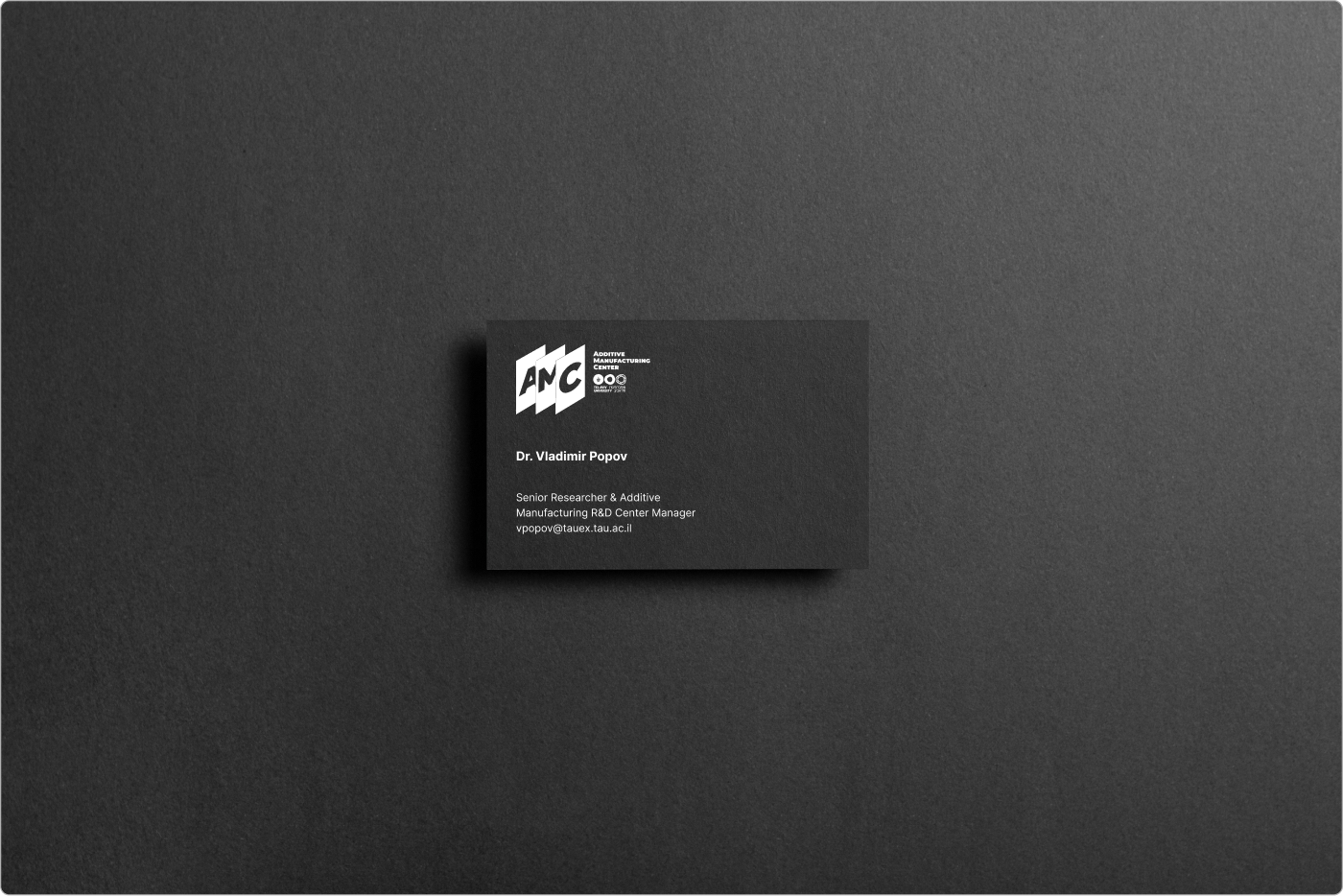
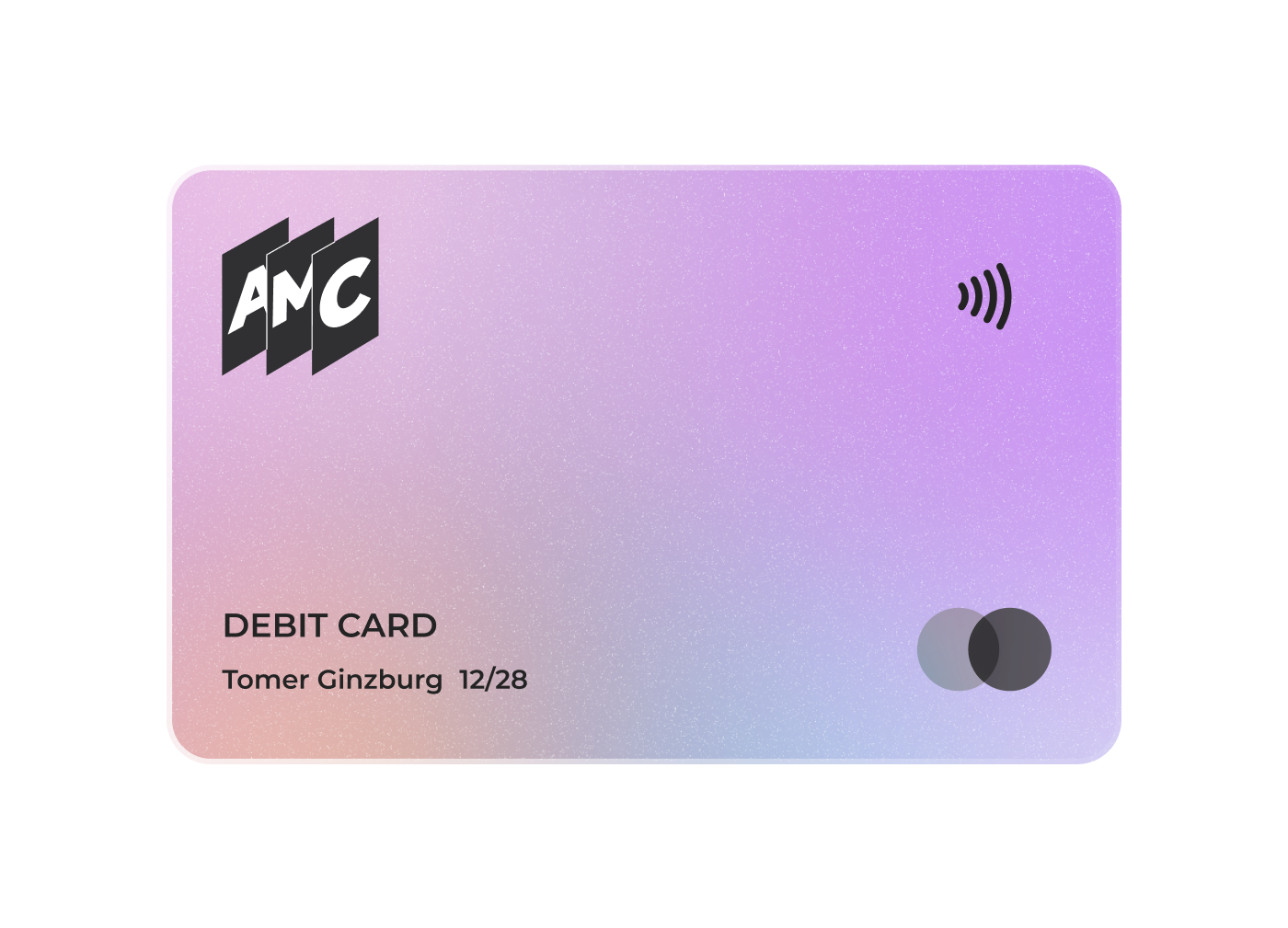
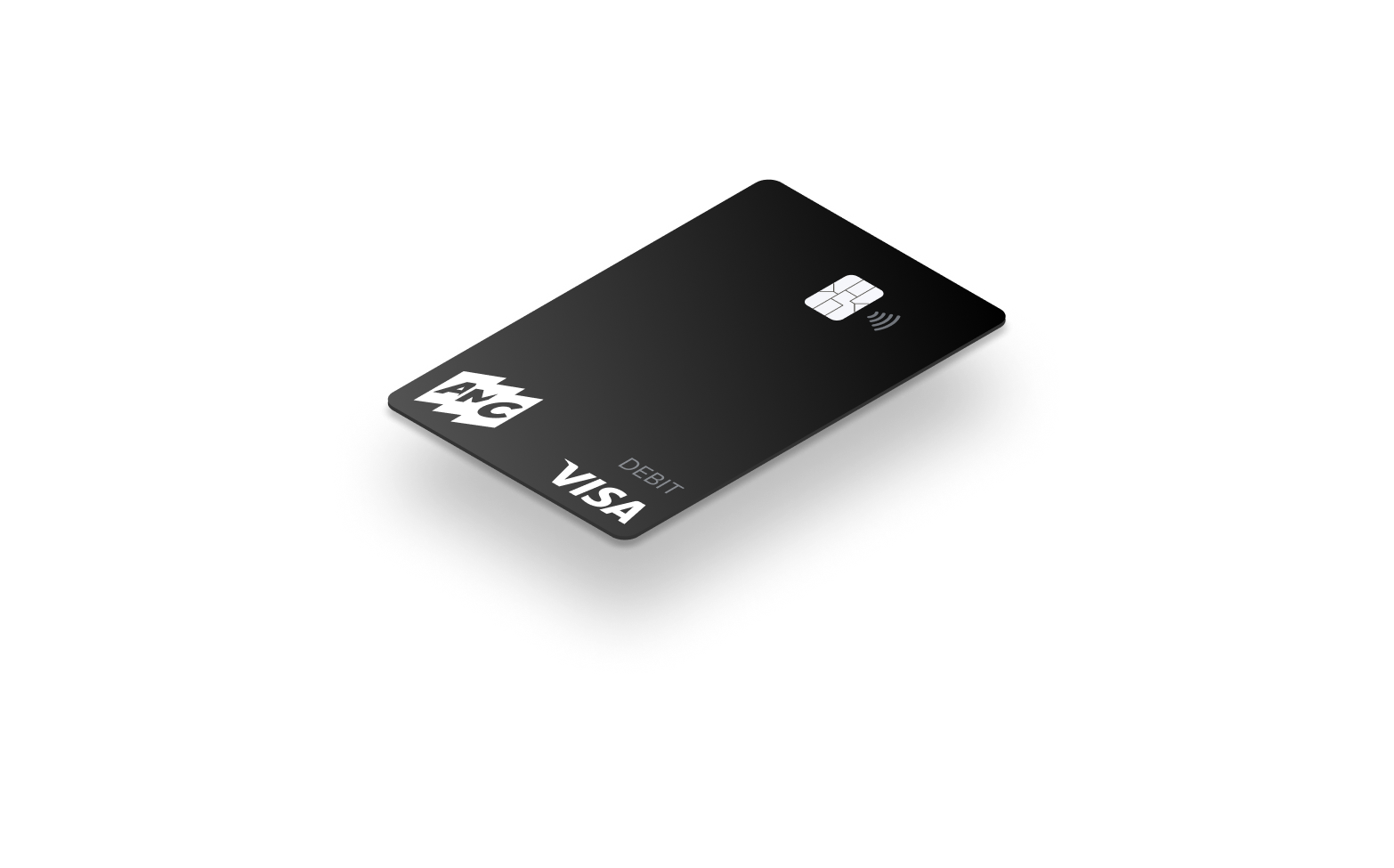
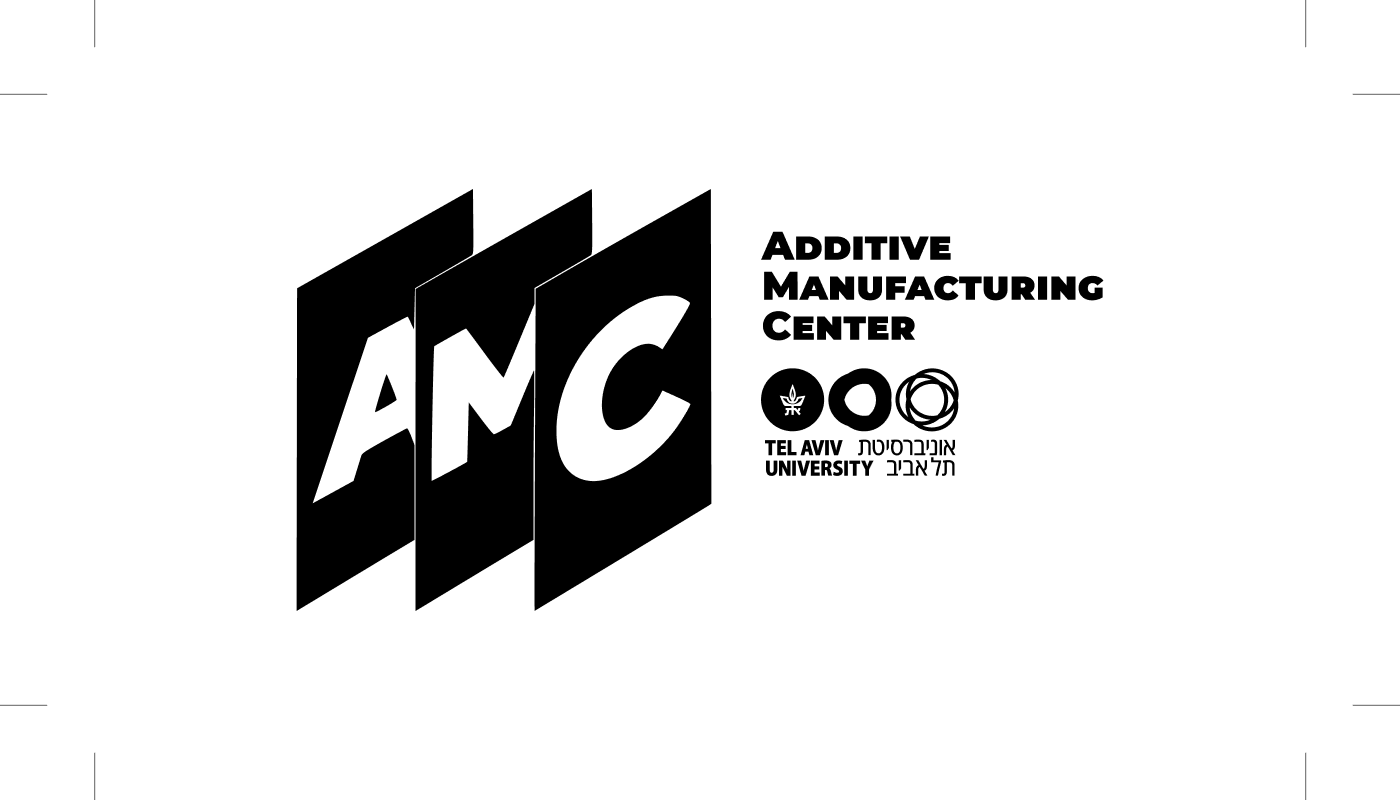
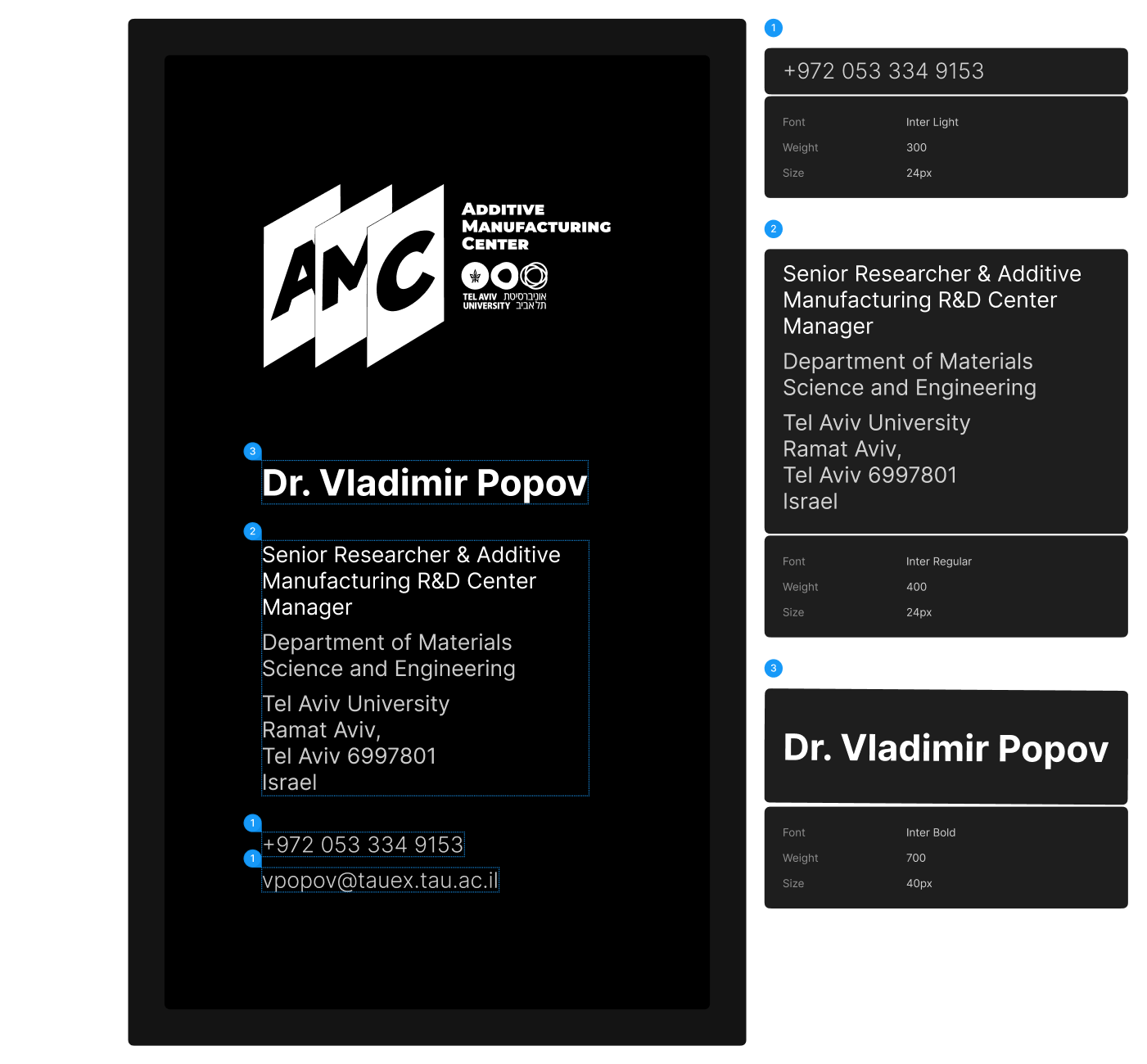
App Screen Examples
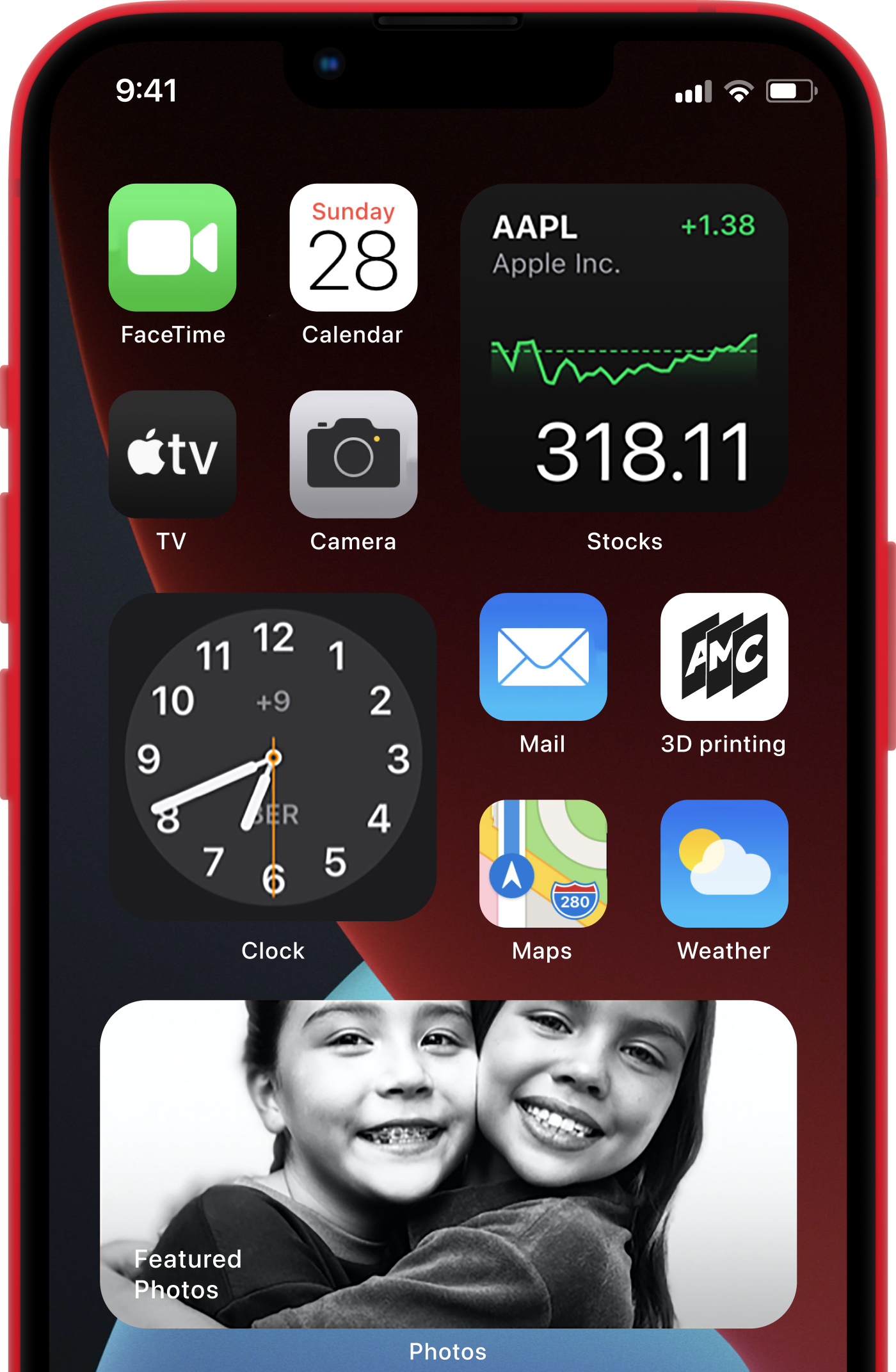
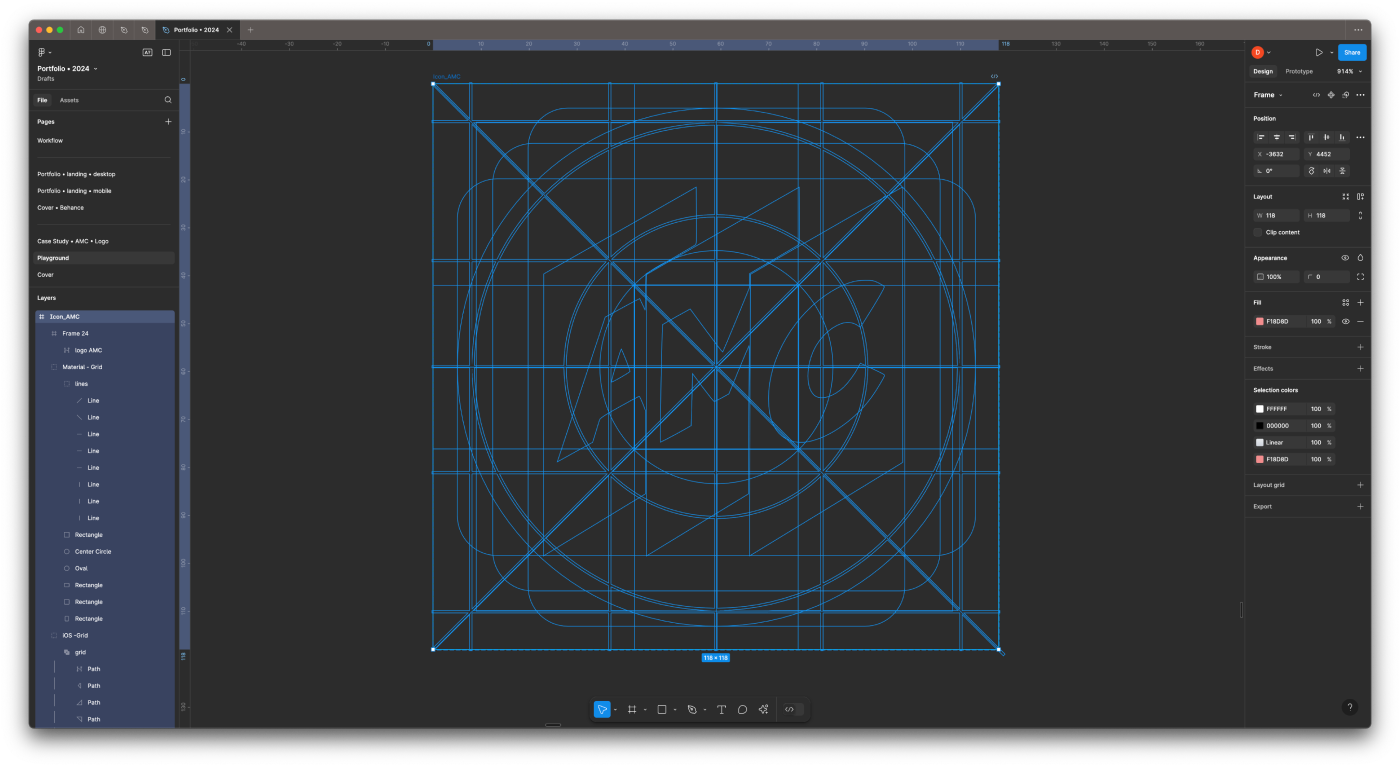
H2 Privacy Policy
H3 Privacy Policy
H4 Privacy Policy
Privacy Policy
Data collected on the basis of consent
CommentsName, email address, content of the comment: this data is collected when you leave a comment and displayed on the Website.Data collected on the basis of legitimate interestWe use Google statistic counter. Based on our legitimate interests, we collect the following data for the purpose of running this website. Your data is not used for any other purposes or shared with third parties. It is removed upon your request.StatisticsThe website uses a minimal build of Google Analytics, a service which transmits website traffic data to Google servers in the United States and allows us to notice trends to improve the user experience on our website. This minimal build processes personal data such as: the unique User ID set by Google Analytics, the date and time, the title of the page being viewed, the URL of the page being viewed, the URL of the page that was viewed prior to the current page, the screen resolution, the time in local timezone, the files that were clicked on and downloaded, the links clicked on to an outside domain, the type of device, and the country, region, and city.Embedded content from other websitesArticles on the Website may include embedded content (e.g. videos, charts, etc.). Embedded content from other websites behaves in the exact same way as if the visitor had visited the other website.These websites may collect data about you, use cookies, embed additional third-party tracking, and monitor your interaction with that embedded content, including tracing your interaction with the embedded content if you have an account and are logged in to that website.Your rights pertaining your dataYou can request that we rectify or erase any personal data we hold about you. Contact us for this with a contact form on this site.




